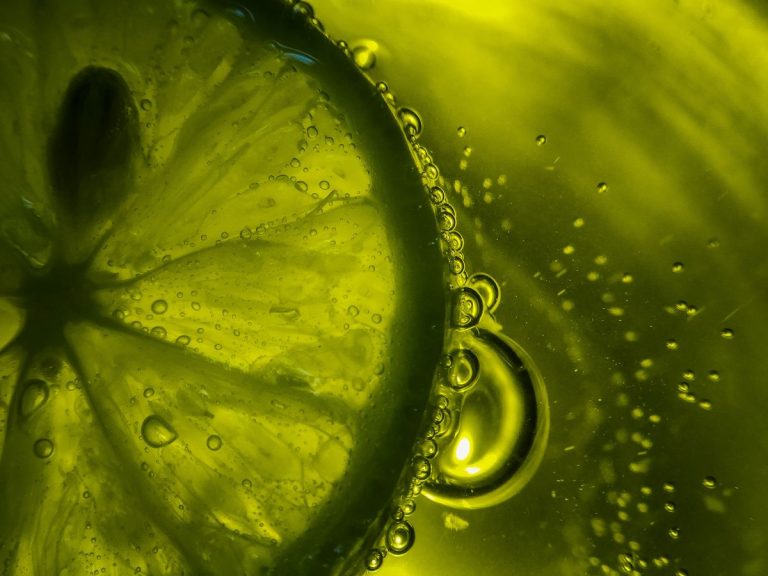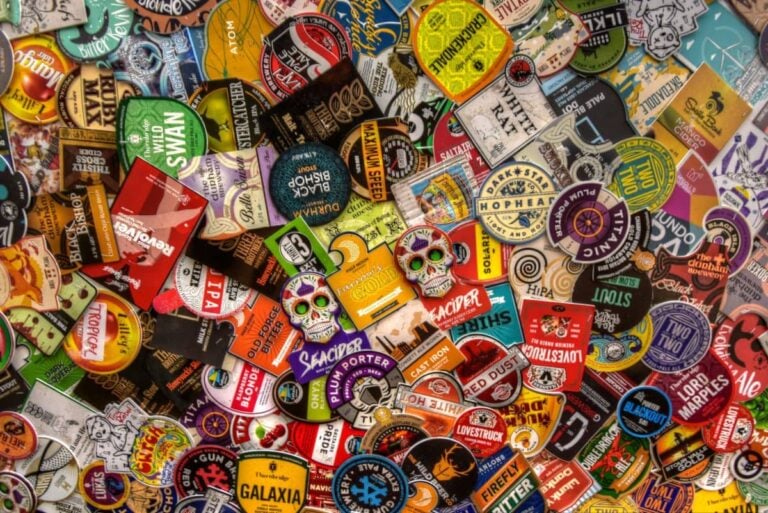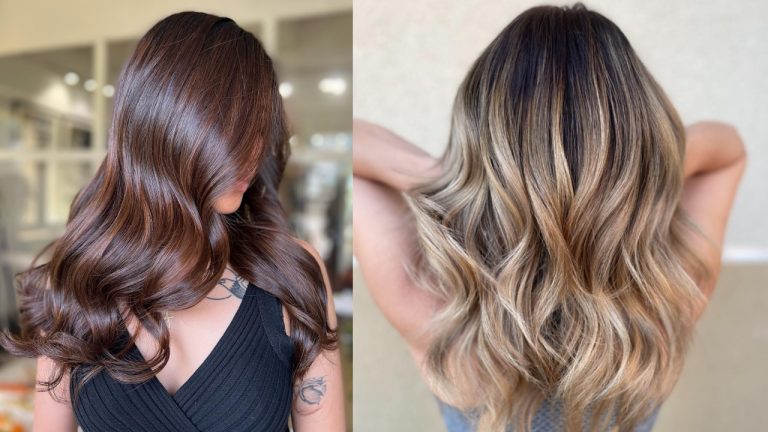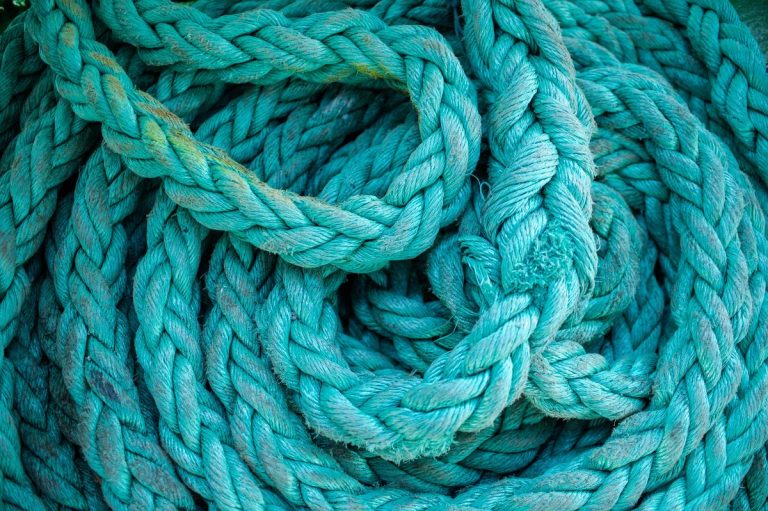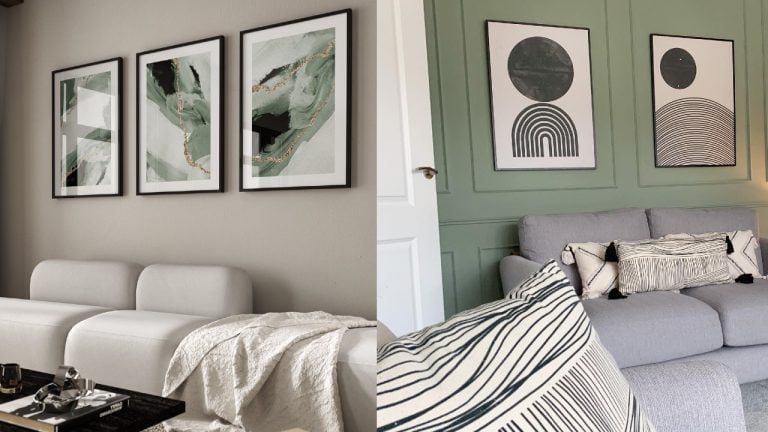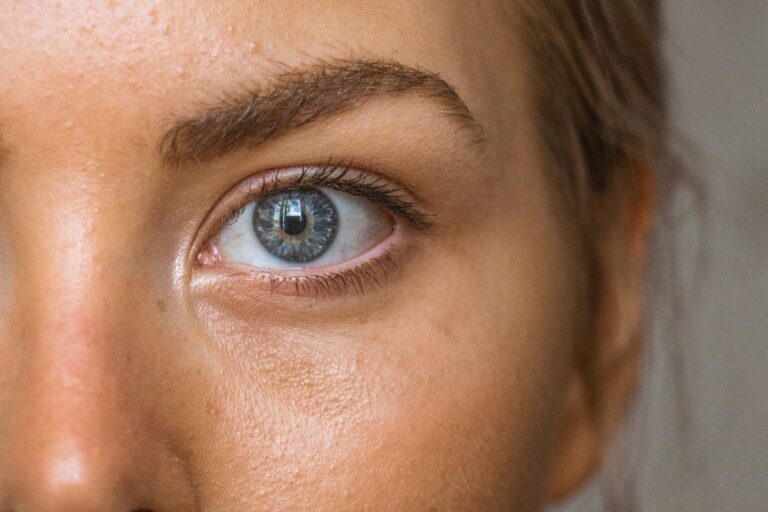Individuals from all spheres of life have always favored the color blue. It is a popular option in a variety of facets of human life, from fashion to home décor, because of its peaceful and quiet properties. A common choice for a variety of styles and tastes is blue since it is a flexible hue that can be both deep and subtle.
In this article, we’ll examine 50 things that are blue and dig into the intriguing world of this alluring color. We will examine the many various things that are tinged with this alluring color, from commonplace products like blueberries and denim trousers to natural occurrences like the blue sky and the ocean. This article will make for an interesting and educational read, regardless of whether you adore the color blue or are just interested in the wide range of items that are available in it. So take a seat, unwind, and explore the amazing world of blue.
Earth

Because there is so much water on Earth, it seems blue. Oceans encompass over 71% of Earth’s surface and reflect blue light from the sky. Additionally, because blue light travels as shorter, smaller waves than other hues, it is distributed more widely than other colors by the Earth’s atmosphere. When seen from the ground, Rayleigh scattering, a phenomenon, gives the sky its blue tint.
Neptune
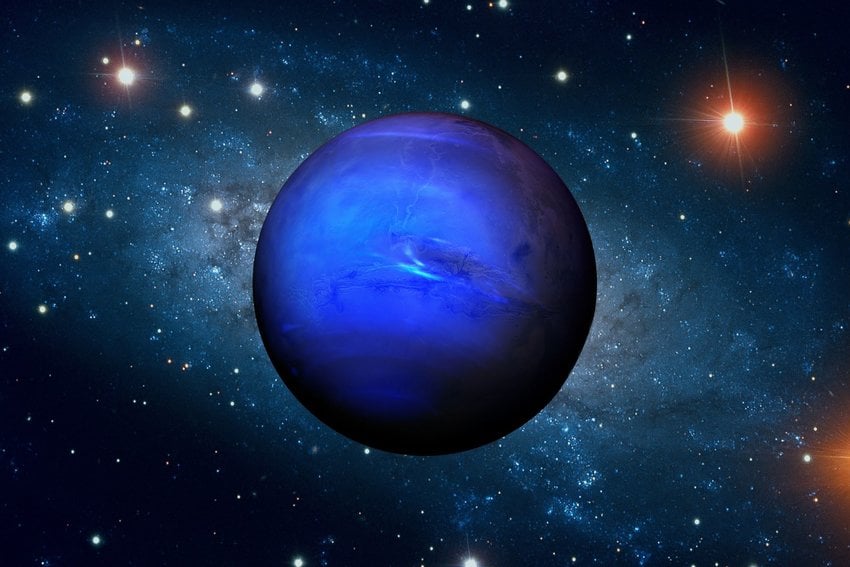
Neptune appears blue due to the absorption and scattering of light in its atmosphere. Methane gas in the atmosphere absorbs red light and reflects blue light, giving Neptune its distinctive blue color. The exact shade of blue can vary depending on factors such as the angle of the sun’s rays, the viewer’s position, and the presence of other atmospheric particles.
Sapphire
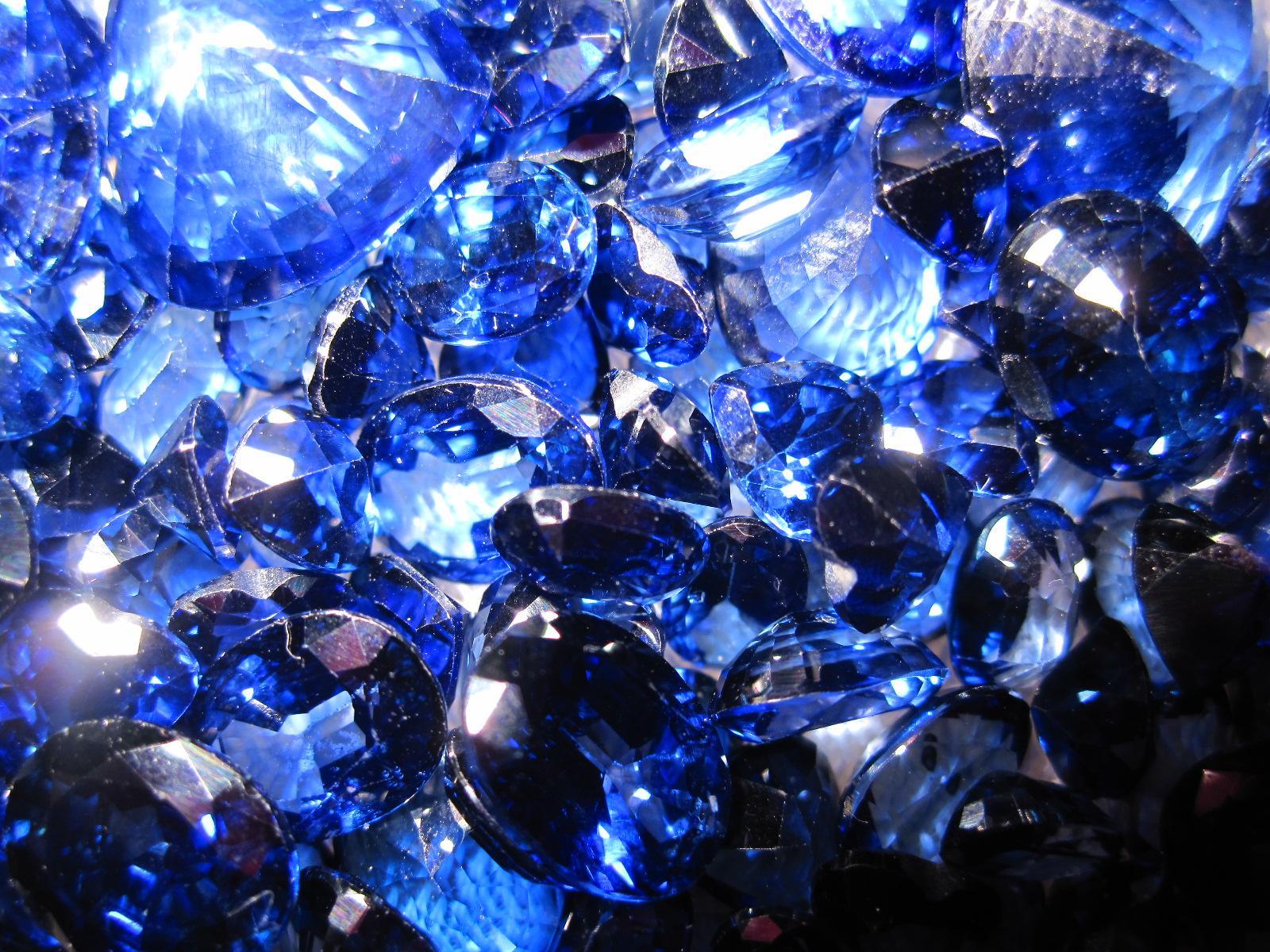
Iron and titanium, which are found in small amounts in sapphire’s crystal structure and absorb specific wavelengths of light to produce a blue color, are the reason why sapphire is blue. Depending on the precise distribution and concentration of these elements inside the sapphire, the precise hue of blue can change.
Turquoise
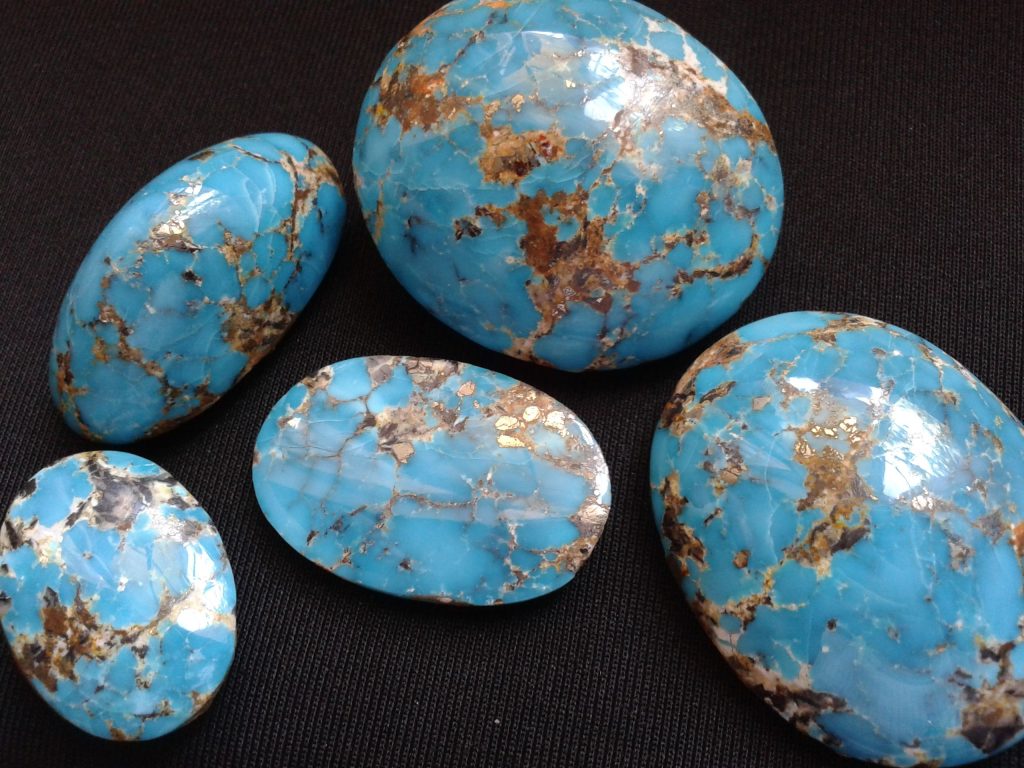
Since it has more blue than green pigments, turquoise has a blue-green hue. Depending on the quantity of blue and green present, as well as the lighting circumstances, the precise color of turquoise might change. The perception of turquoise’s color can also be affected by the other hues or materials present in the immediate area.
Aquamarine
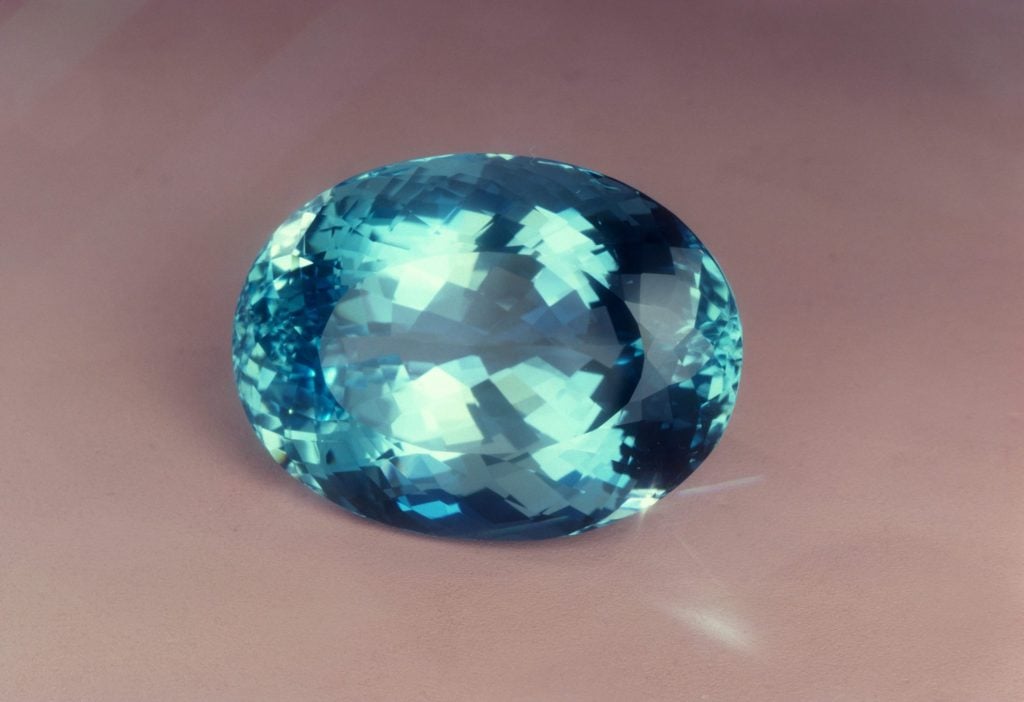
Beautiful blue-green gemstone aquamarine is made of the mineral beryl. The iron and other minor elements that are present inside aquamarine are what give it its blue hue. These substances respond to visible light and absorb the red and yellow colors while reflecting the blue-green ones back. The gemstone seems blue to us as a result. Depending on how much of these components are present in the beryl, the blue color’s intensity and hue can change.
Tanzanite
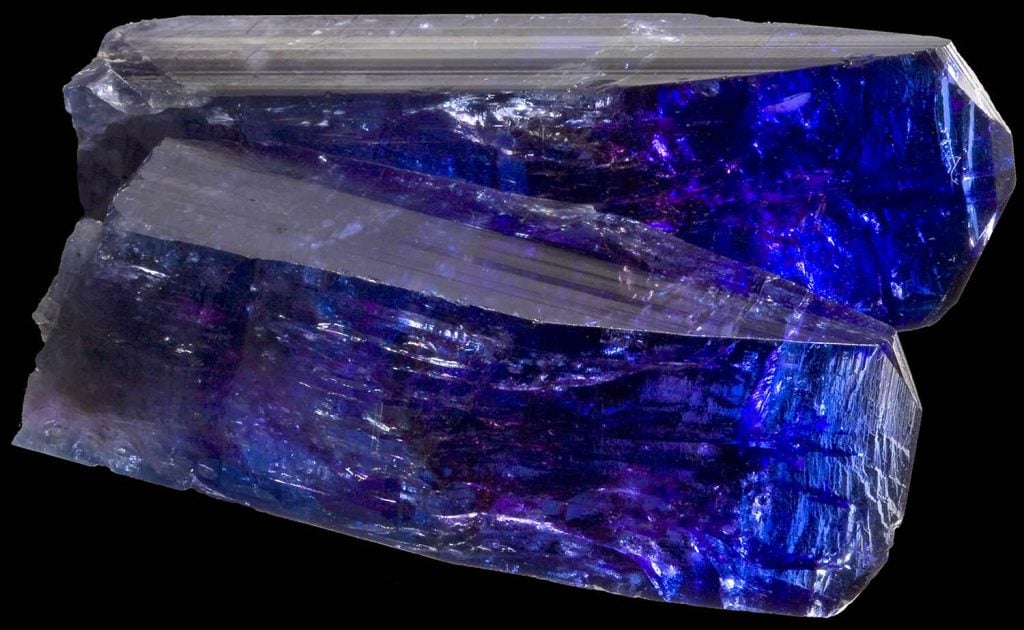
Trace levels of vanadium in tanzanite’s chemical makeup are what give it its blue color. Vanadium ions absorb some wavelengths of light while reflecting others, giving the gemstone its distinctive blue hue.
Chalcedony
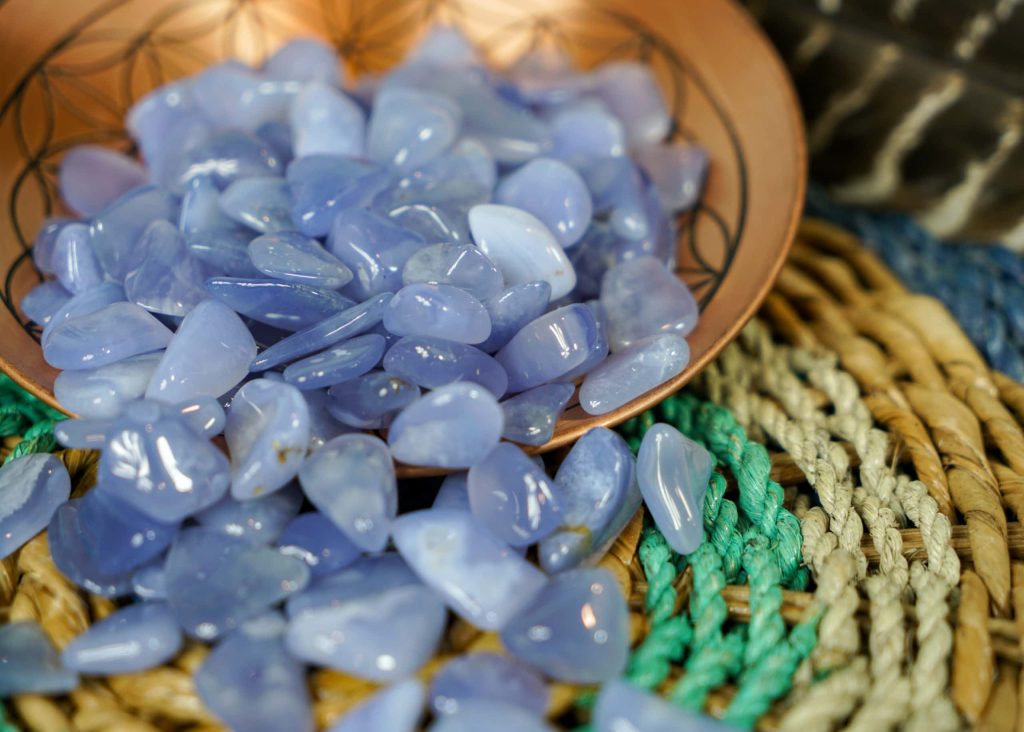
Due to the existence of tiny quantities of impurities from transition metals like copper, chalcedony may have a wide range of hues, including blue. Because of these impurities, blue chalcedony acquires its distinctive blue color, absorbing some light wavelengths while reflecting others.
Lapis lazuli
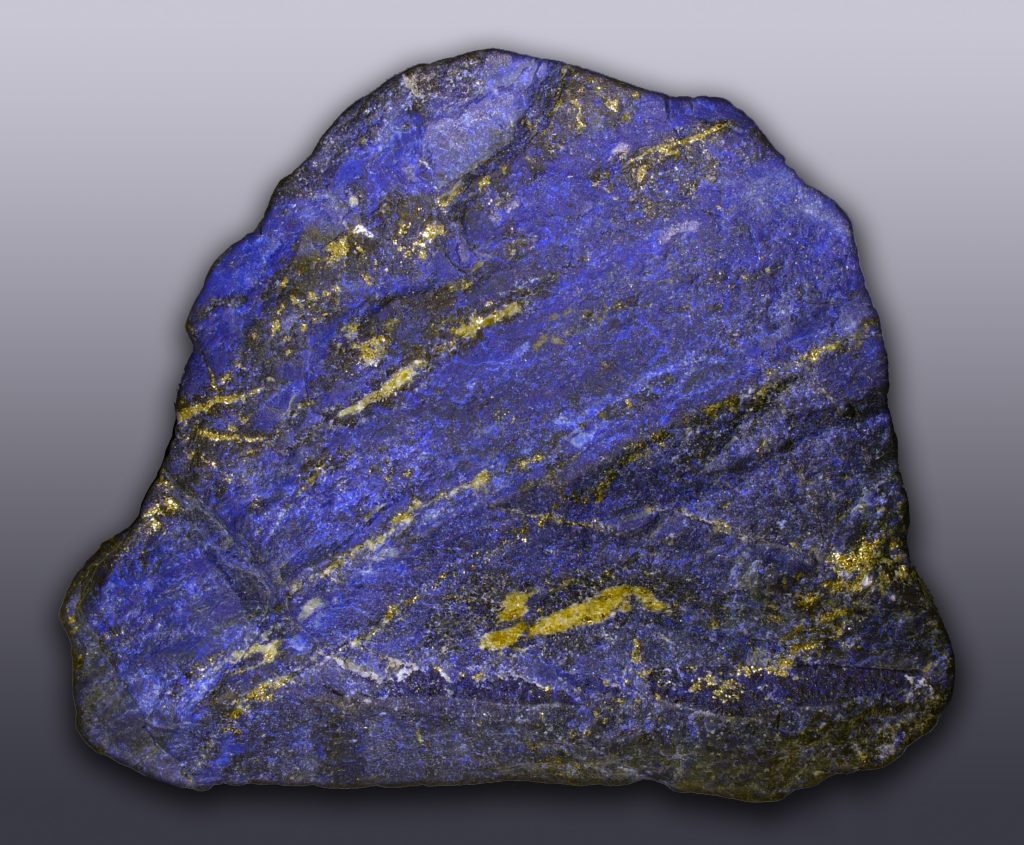
Lazurite is a mineral component of lapis lazuli, comprising sulfur atoms and aluminum ions, which absorb light in the red portion of the spectrum and give the stone its blue color.
Indicolite
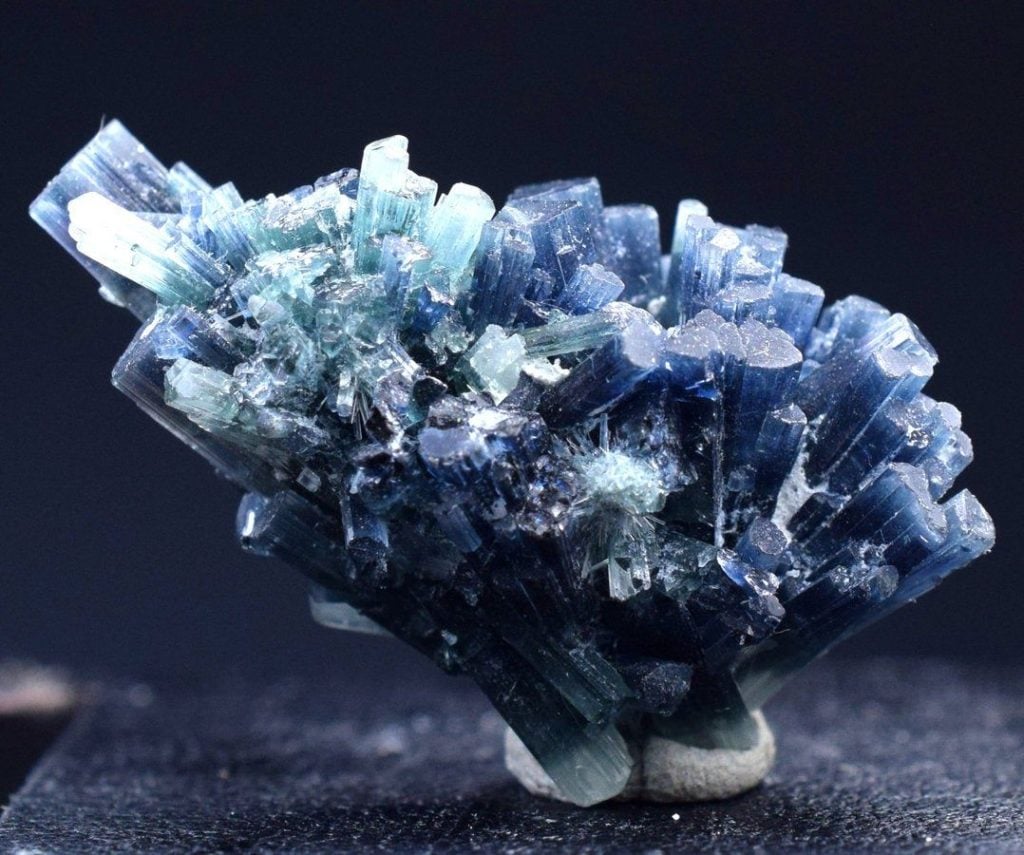
Indicolite is a kind of tourmaline mineral that is blue because it contains traces of iron, which gives it its unique blue hue. Tourmaline’s blue color is influenced by the amount of iron it contains in its crystal structure, with deeper blues denoting a larger iron concentration. Depending on the illumination and the angle of sight, indicolite can also have a greenish–blue or bluish–green color.
Larimar
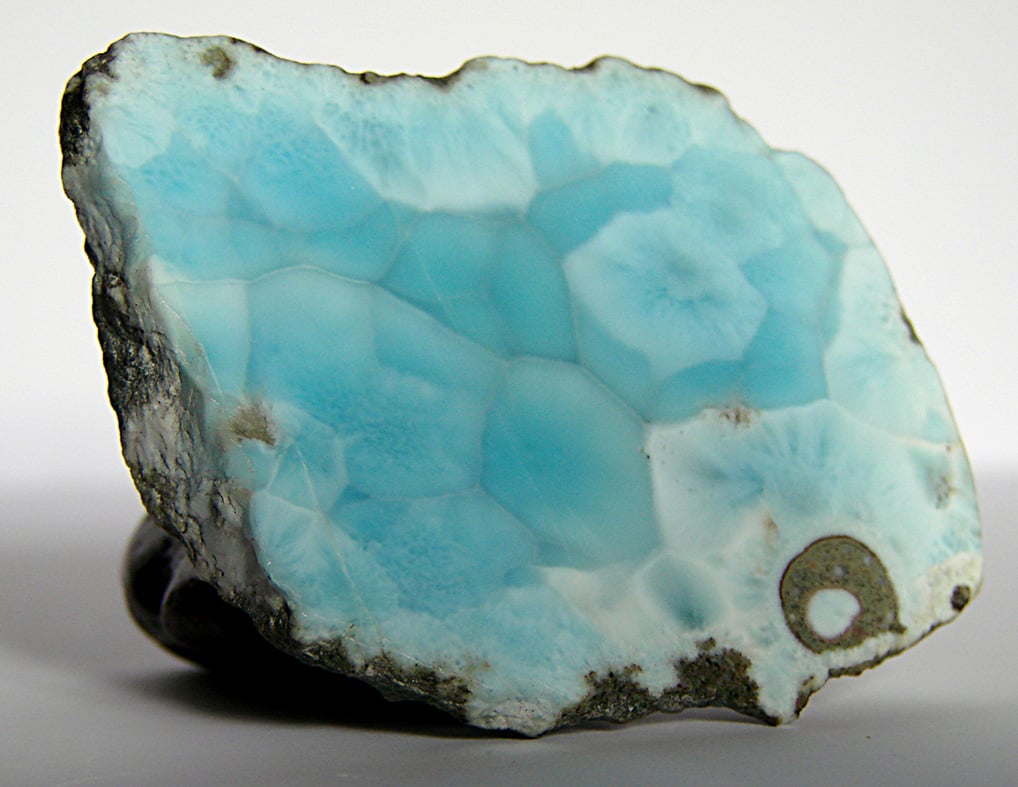
Only in the Dominican Republic can one find larimar, a rare blue variety of the mineral pectolite. Due to its likeness to the crystal-clear waters of the Caribbean Sea, it is often referred to as the “dolphin stone” or the “Caribbean gemstone.” Larimar is valued for its distinctive and lovely hue and is frequently used to make jewelry. Its metaphysical attributes are thought to encourage inner tranquility, clarity, and healing.
Diamond
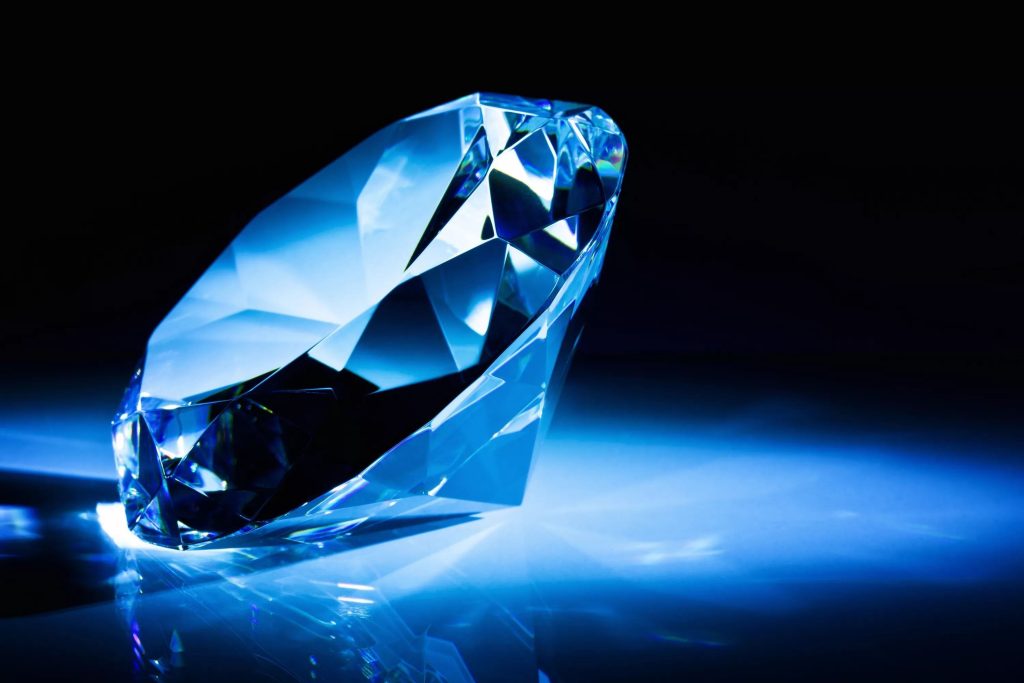
Diamonds are not inherently blue, but some diamonds can appear blue due to the presence of impurities or structural defects within the crystal lattice. Blue diamonds contain trace amounts of boron, which absorbs red, yellow, and green light, allowing only blue light to be transmitted and reflected, resulting in their characteristic blue color. The intensity and shade of blue can vary depending on the concentration of boron present in the diamond.
Spinel
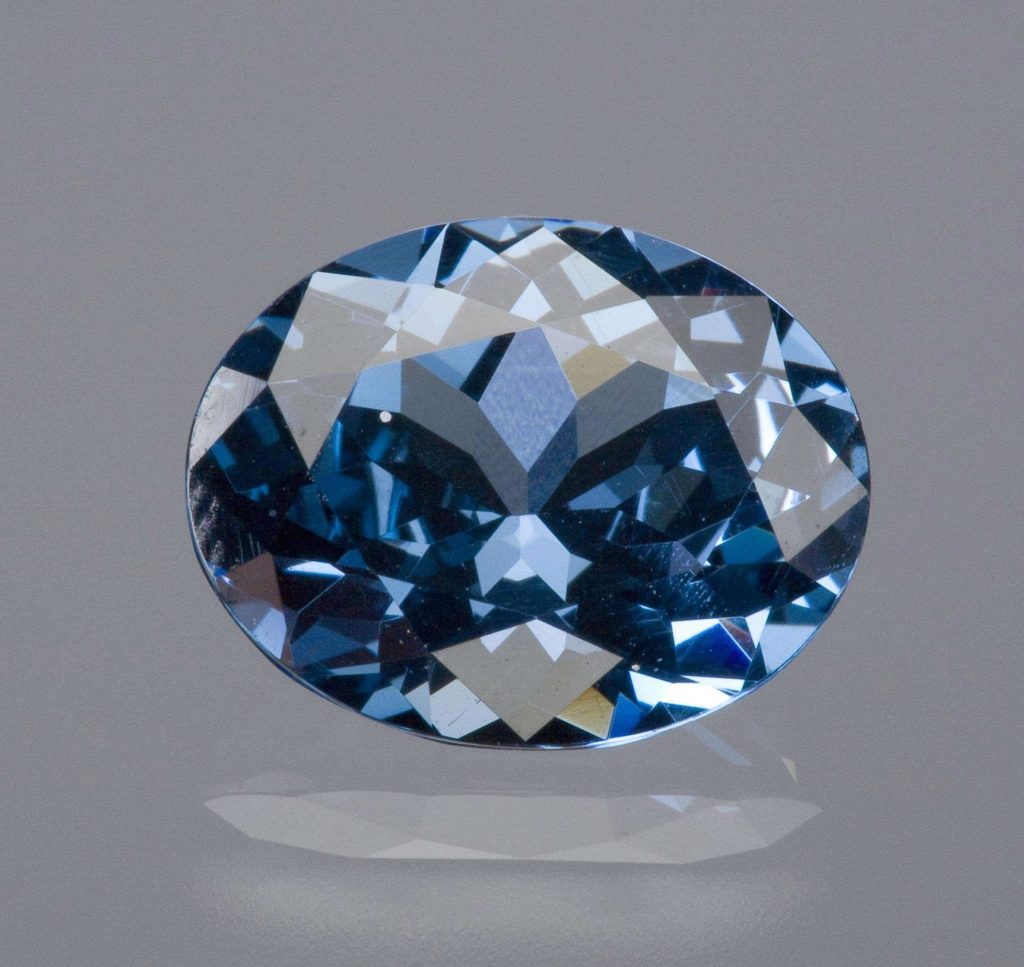
Because of some impurities or crystallographic flaws, spinel has a blue color. The crystal lattice may absorb some wavelengths of light while allowing others to flow through as a result of these impurities or flaws, giving the crystal the blue hue. The precise reason why a particular Spinel specimen is blue will rely on its unique chemical makeup and crystal structure.
Topaz
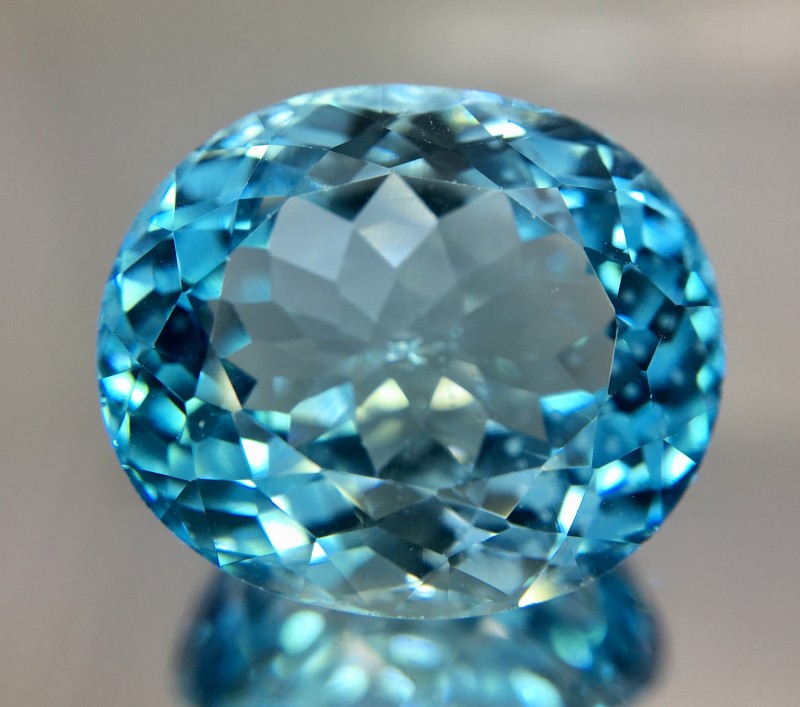
Topaz may also be found in blue, despite its more popularly recognized yellow, brown, or orange colors. The inclusion of tiny levels of iron and/or titanium in the crystal structure of topaz is usually what gives it its blue hue. Moreover, the blue hue of the topaz may be improved or altered by heat treatment.
Moonstone
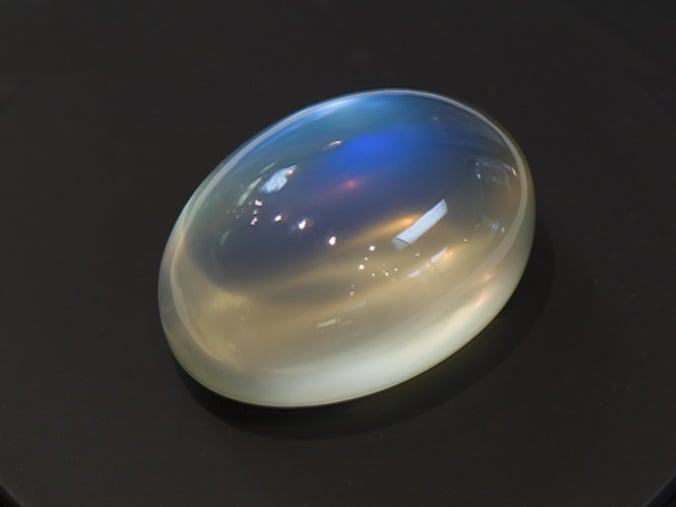
Moonstone is not necessarily always blue. In fact, it can come in a variety of colors including white, gray, brown, peach, and green. However, there is a type of moonstone called blue moonstone that has a blue sheen or iridescence caused by light scattering within the crystal. This optical effect is known as adularescence, and it occurs when light enters the moonstone and is scattered by microscopic layers of feldspar within the stone. The color of the blue moonstone can vary from pale blue to a deeper, more vibrant blue.
Opal

Opal is not only blue; it may also appear in white, yellow, orange, green, red, and purple. Yet because of how the gemstone interacts with light, some varieties of opal can seem blue. Tiny silica spheres placed in a fairly regular pattern inside of blue opals cause light rays to diffract, giving the stone its blue hue. The opal’s particular shade of blue depends on the size and spacing of the spheres.
Blue Spruce
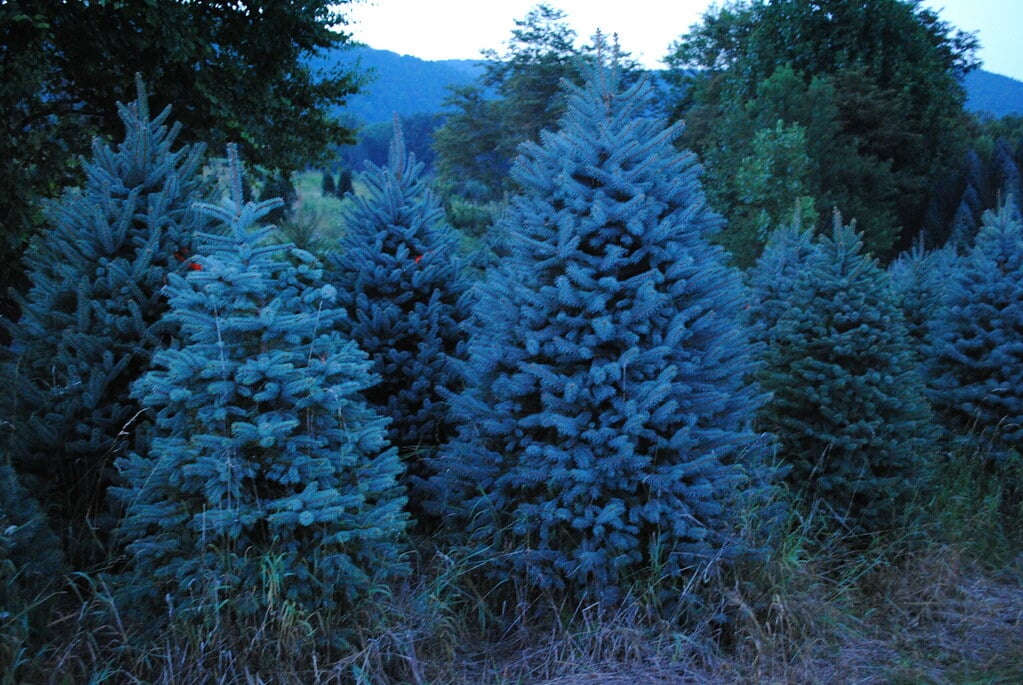
The waxy coating on the needles of the blue spruce (Picea pungens) causes them to reflect and scatter sunlight, giving them a bluish color. The tree is also protected from external pressures and helps maintain moisture thanks to this layer, known as a cuticle. Many elements, including the age, location, and growth circumstances of the tree, might affect the blue color’s intensity.
California Lilac
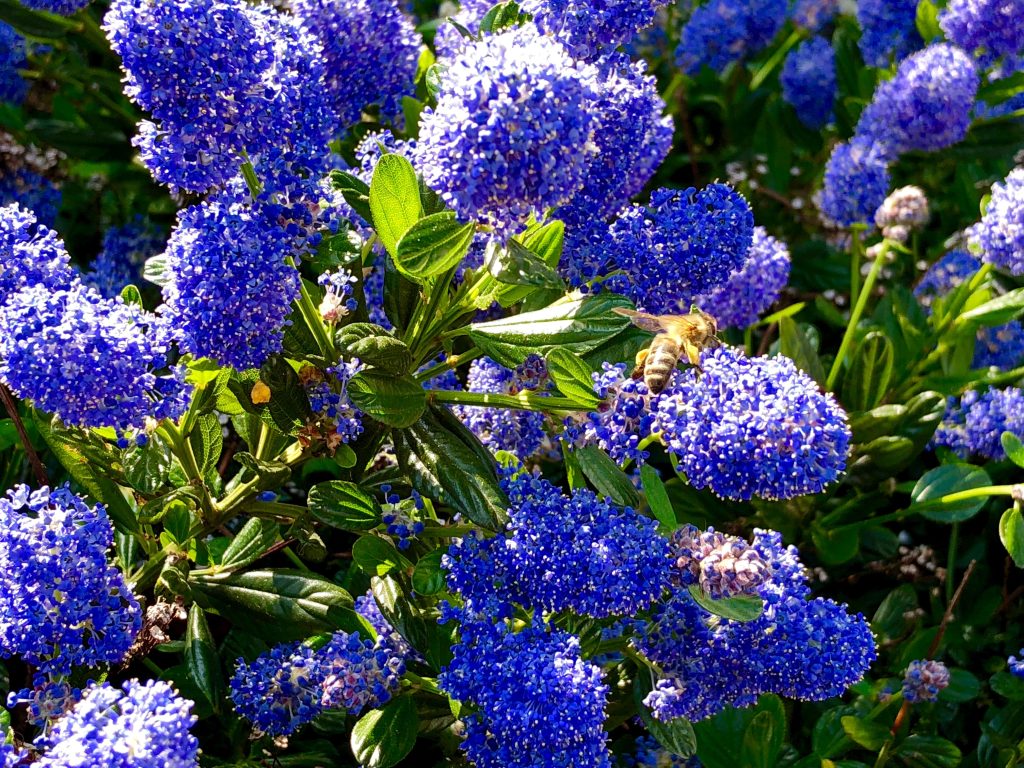
California lilac, also known as Ceanothus, is blue because of the presence of pigments called anthocyanins in its flowers. Anthocyanins are responsible for producing a range of colors in flowers, including blue, purple, red, and pink. In the case of California lilac, the specific anthocyanins present in its flowers reflect blue light, giving the plant its distinctive blue hue.
Beetle Kill Pine

Beetle kill pine, also known as blue-stained pine, is blue in color due to the staining of the wood by a fungus carried by the mountain pine beetle. The blue stain is actually caused by a chemical reaction between the fungus and the tree’s sap, resulting in a distinctive blue-gray color that is highly sought after in the woodworking industry. The staining process does not affect the structural integrity of the wood but can make it more brittle and prone to cracking, making it less suitable for certain applications.
Agapanthus
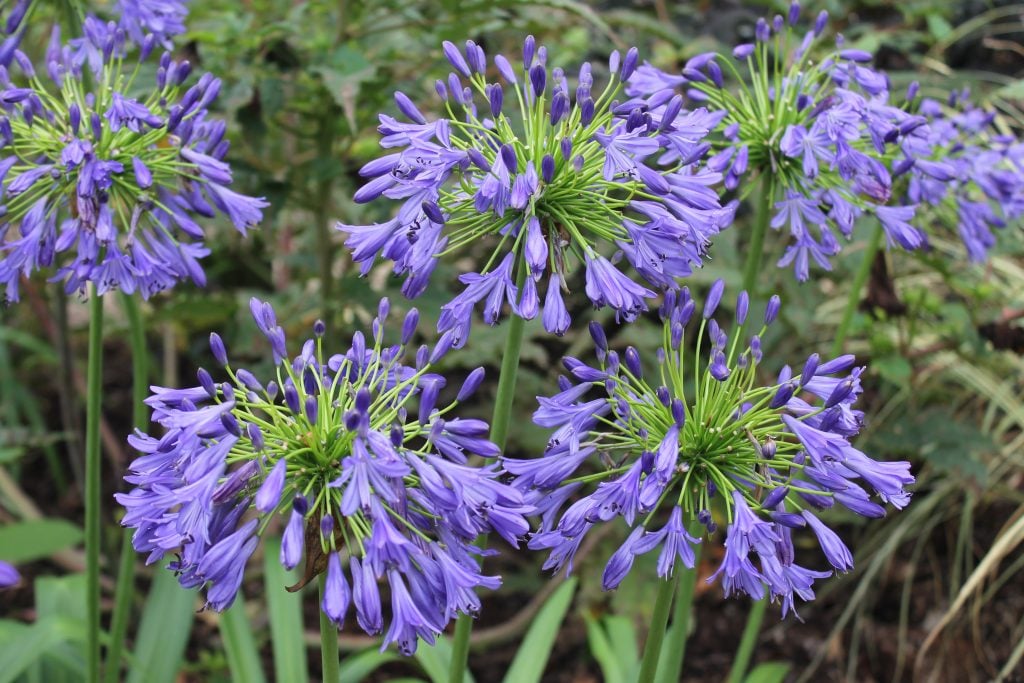
Agapanthus, commonly referred to as the African lily, is a flowering plant that has long, thin stems covered with beautiful clusters of funnel-shaped blue, white, or purple blooms. Contrarily, pines are coniferous trees that grow cones and have needle-like leaves.
Anemone
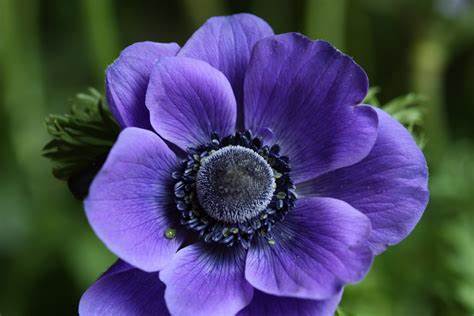
Many hues, including blue, are available for anemones. Anthocyanins, a class of pigments responsible for a variety of blue, purple, and red colors in flowers and other plants, are often the cause of the blue color in anemones. Species, growth circumstances, and other variables can all affect the precise shade of blue in anemones.
Bachelor Button
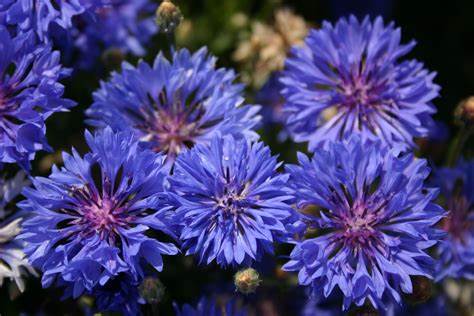
The anthocyanin-containing pigments of bachelor buttons, also known as cornflower or Centaurea cyanus, are what give the plant its blue color. The cells in the flower’s petals scatter blue light more effectively than other hues, which is another factor in how the color blue is produced.
Balloon Flower
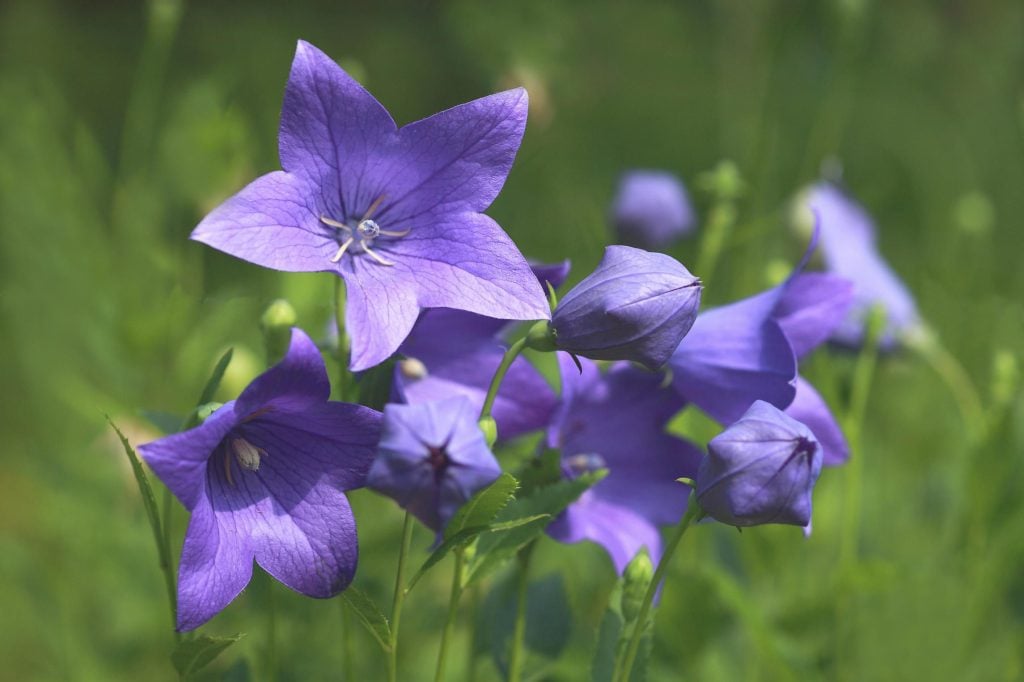
The blue-violet hue of balloon flowers (Platycodon grandiflorus) is distinctive. In order to draw pollinators, including bees and butterflies, who are more attracted to certain hues, balloon flowers create these pigments in their petals. Thus, the Balloon flower’s blue hue serves a crucial biological function in the plant’s reproduction.
Bluebells
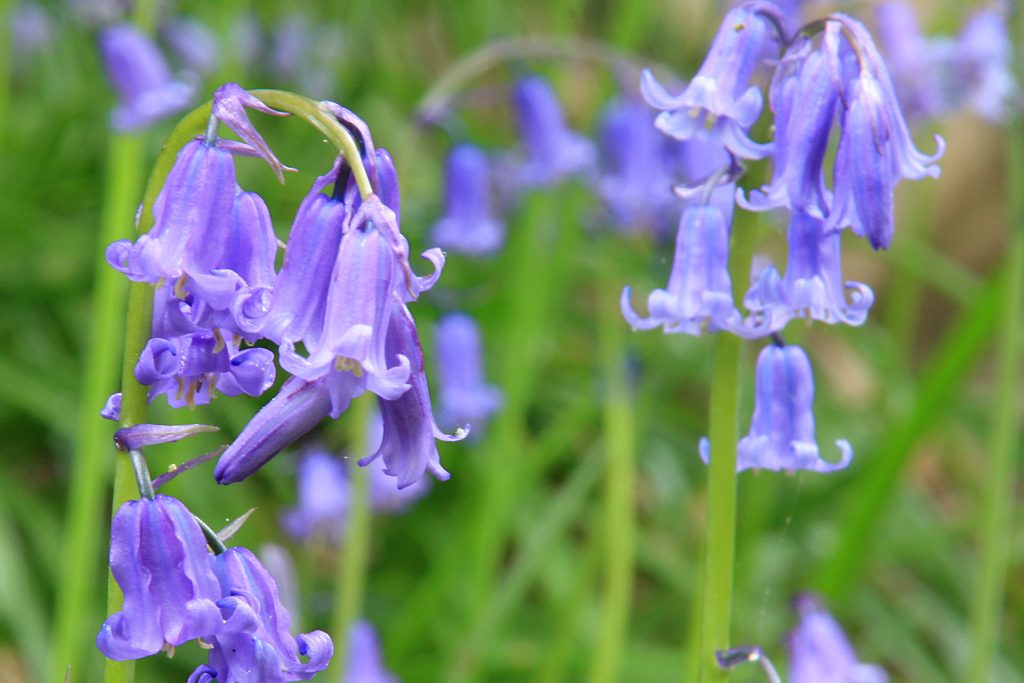
Western Europe is the home of the bluebell, a kind of flowering plant that blooms in the spring and is distinguished by its stunning blue, bell-shaped flowers. They like wet, shady environments and provide a vital food supply for bees and other pollinators. The diuretic and expectorant qualities of bluebells have been employed in traditional medicine as well. It’s vital to remember that, despite their popularity in gardens and parks, wild bluebells are sometimes legally protected and shouldn’t be collected or disturbed.
Campanula
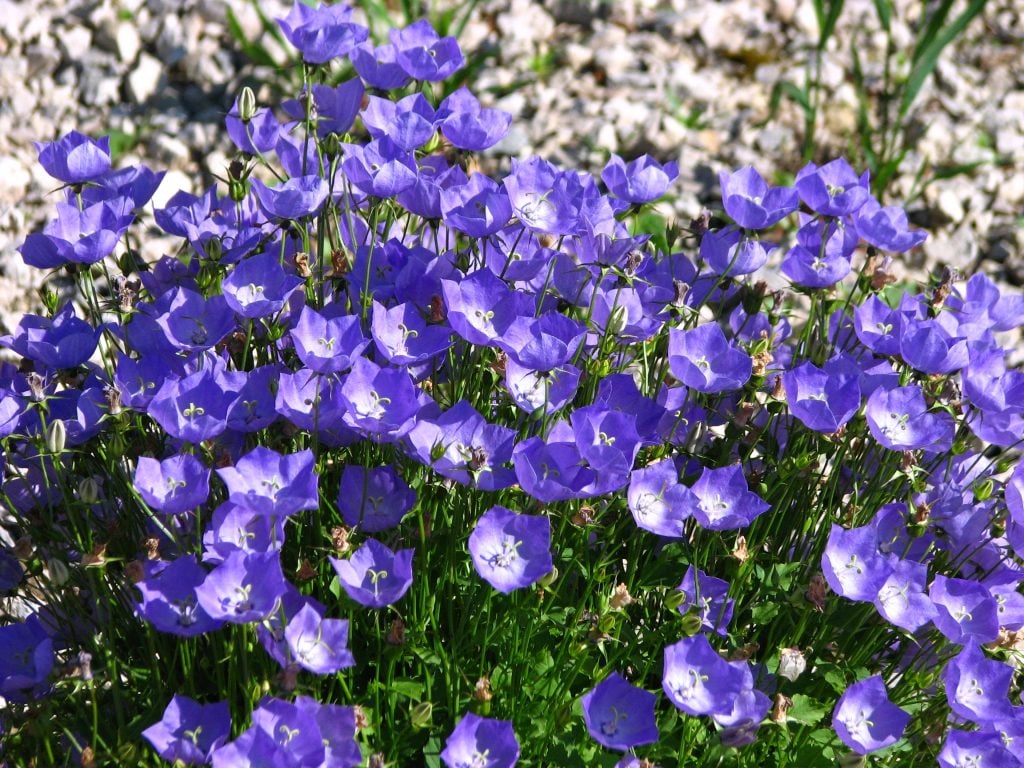
In the blue, white, pink, and purple hues, bell-shaped blooms are produced by the flowering plant genus Campanula. They can be annuals, biennials, or perennials, and they are indigenous to temperate areas of the Northern Hemisphere. The popularity of campanula plants is attributed to their lovely blossoms, simplicity in care, and therapeutic benefits.
Blue Iguana
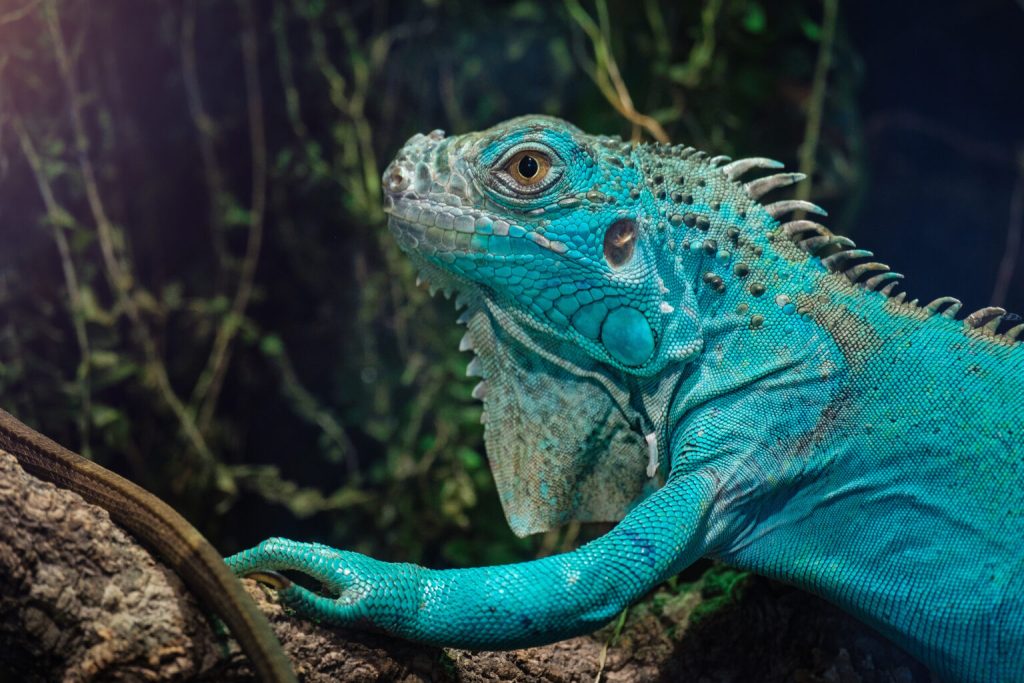
The blue hue of the blue iguana results from structural coloring brought on by light reflection and dispersion by specialized skin cells called iridophores. The iguana’s skin is blue because of the way these cells are arranged, which causes them to reflect and absorb distinct wavelengths of light. Certain blue iguanas could also have melanin or other pigments in their skin, which would further intensify their blue coloring.
Poison Dart Frog
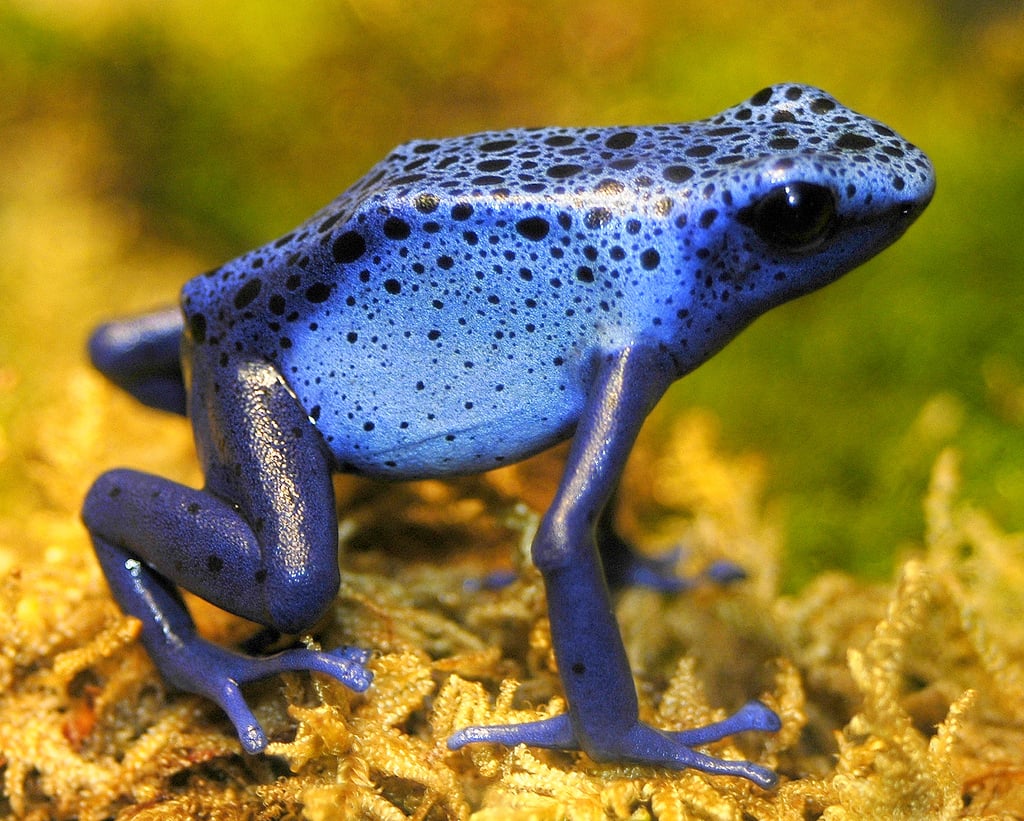
The explanation for the coloring of poison dart frogs—which can include blue ones—is a result of a mix of genetic and environmental variables. Pterorhodin, a pigment that gives skin the color blue, is present in the skin of blue poison dart frogs. In addition, their vivid colors serve as a warning to predators that they are poisonous, aiding in their protection in the wild.
Blue Gecko
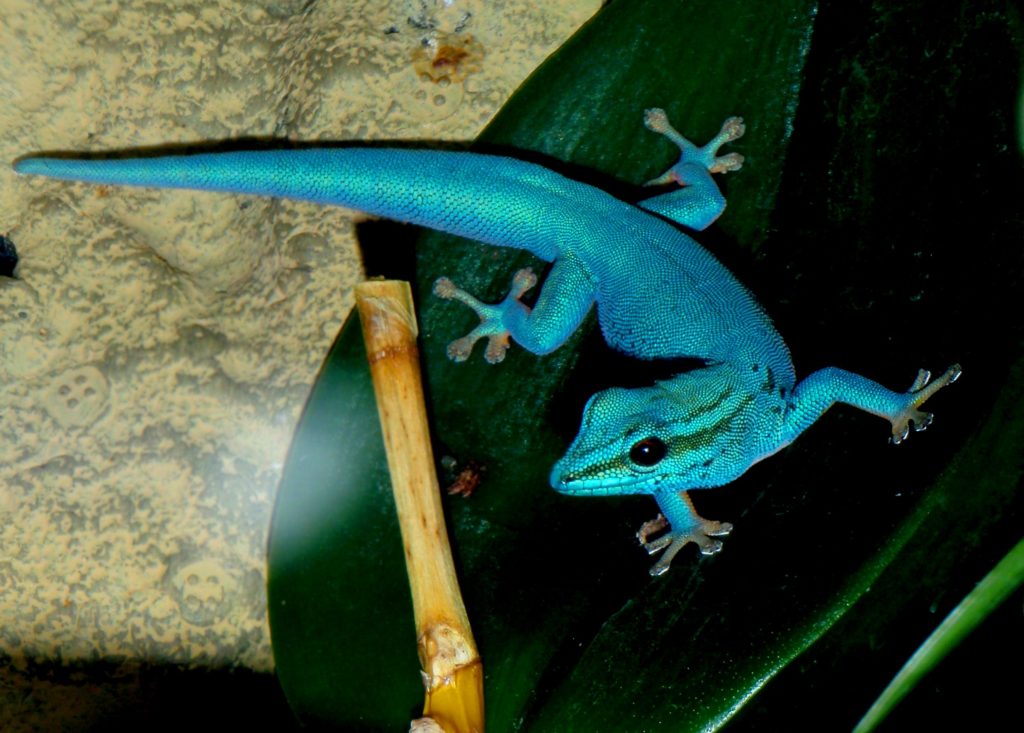
A blue gecko’s appearance is caused by pigments in its skin that absorb and reflect specific light wavelengths, giving it a blue hue. Structural or morphological colors, which are produced by the way light interacts with the tiny structures in the gecko’s skin, are the specific type of pigment responsible for the blue coloring.
Ribbon Eel
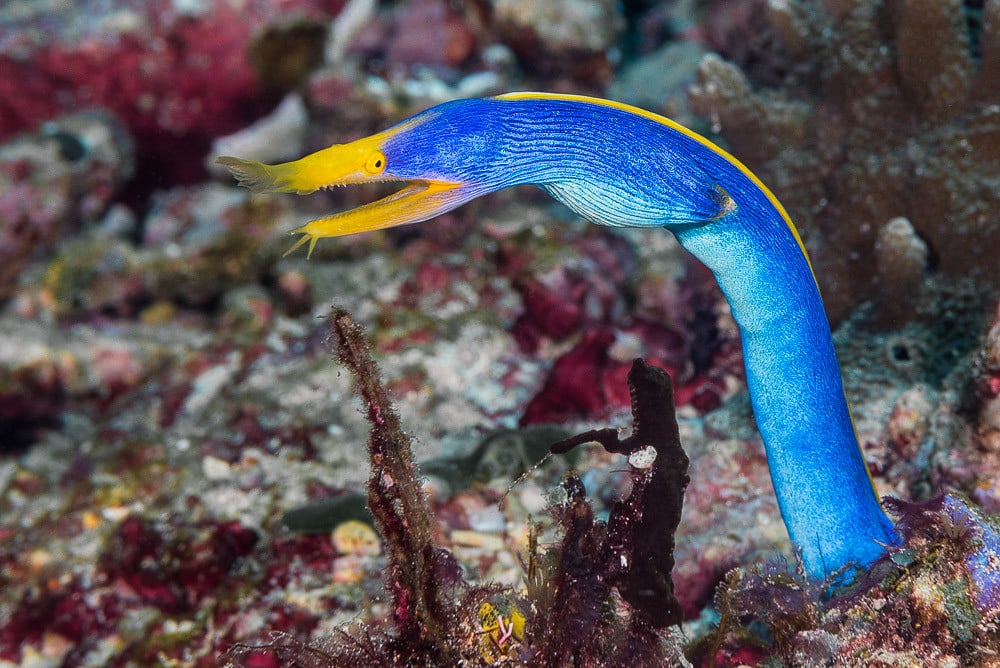
Due to the presence of chromatophores or pigment cells in its skin, the Ribbon Eel also known as the Blue Ribbon Eel is blue. These cells are home to pigments like melanin that give the eel its distinctive blue hue. Depending on its age and gender, the Ribbon Eel’s color can also change from blue to black. Adult male Ribbon Eels turn blue with yellow dorsal fins and a black anal fin, in contrast to younger Ribbon Eels, which are often black with yellow dorsal fins.
Carpathian Blue Slug
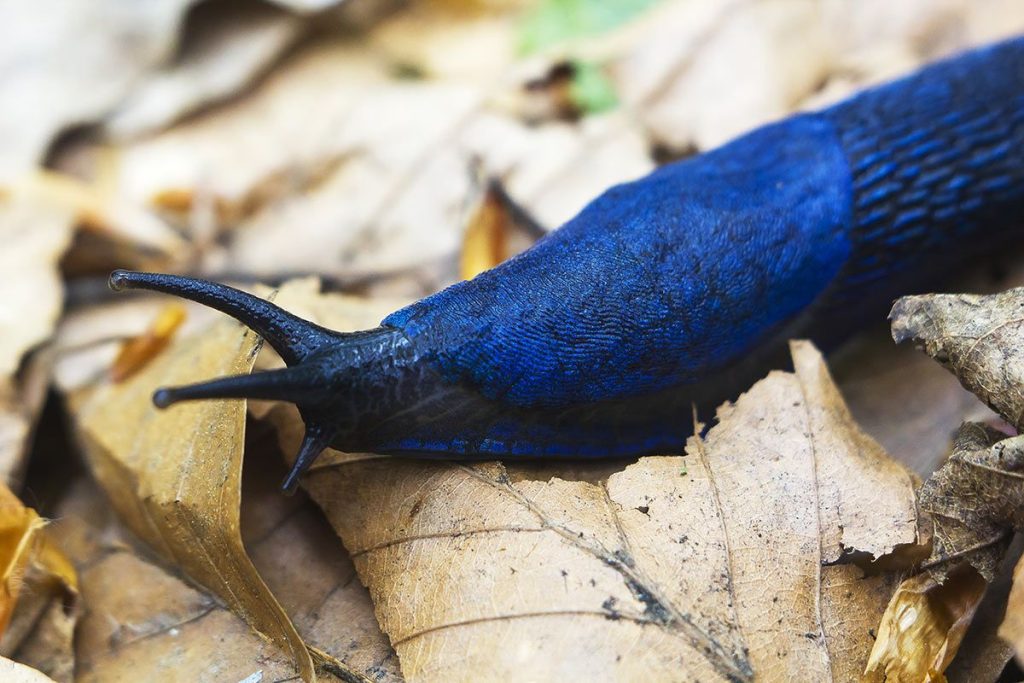
The Carpathian Blue Slug’s distinctive blue hue comes from a rare pigment called “biliverdin,” which is produced when the slug’s body breaks down its own blood and is stored in unique skin cells. Several factors, including the slug’s age, what it consumes, and its environment, can affect how vivid its blue is.
Blue Racer Snake
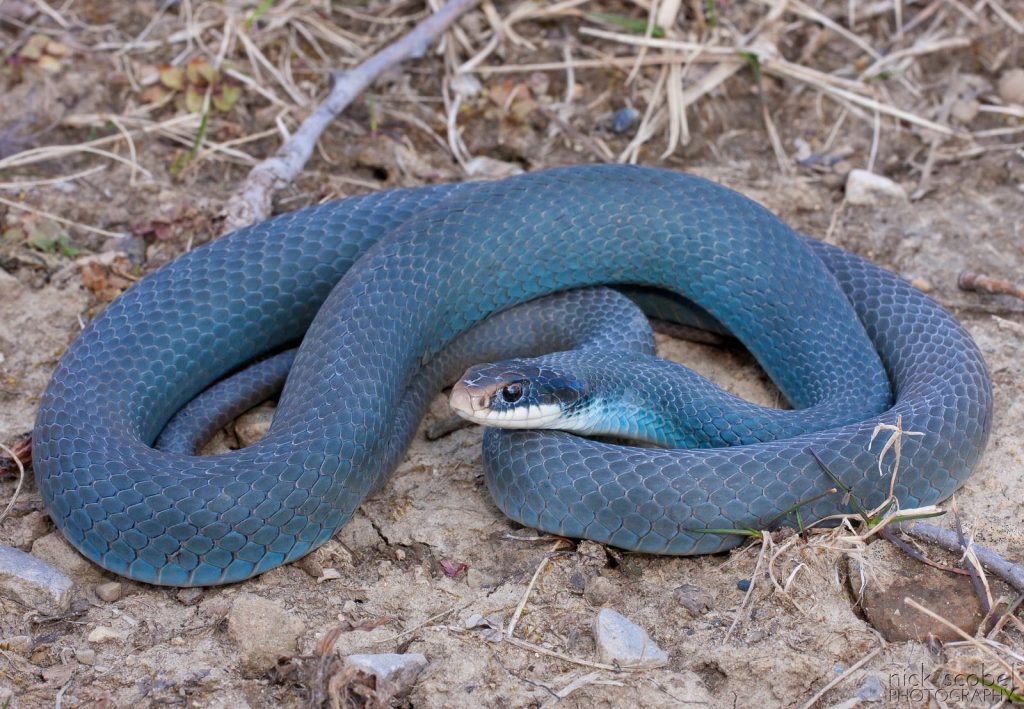
The Blue Racer Snake (Coluber constrictor foxii) gets its name from the bluish-gray coloration on its upper body. This coloration is caused by the presence of microscopic ridges on the snake’s scales that scatter and reflect light in a way that creates a blue appearance. The underside of the snake is typically white or yellowish in color. The blue coloration may also serve as a form of camouflage in certain environments, such as open grasslands or woodland edges.
Bluebottle Jellyfish
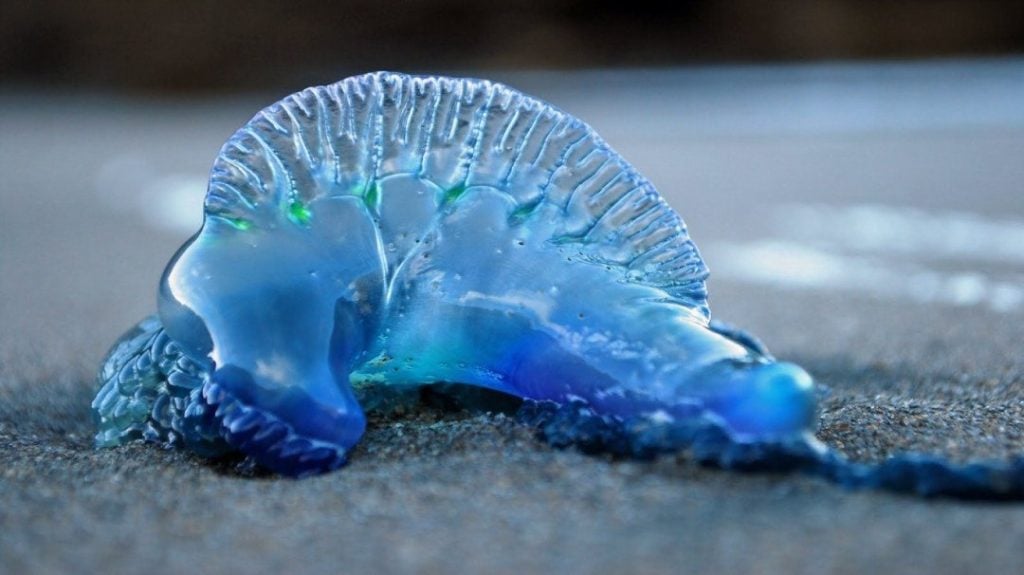
The Bluebottle Jellyfish, often called the Portuguese Man o’ War gets its characteristic blue hue from specialized cells called “cnidocytes,” which contain pigments. In combination with the jellyfish’s transparent body, these pigments provide a vivid blue colour that makes it hard for predators to notice them in the ocean water.
Siamese Fighting Fish
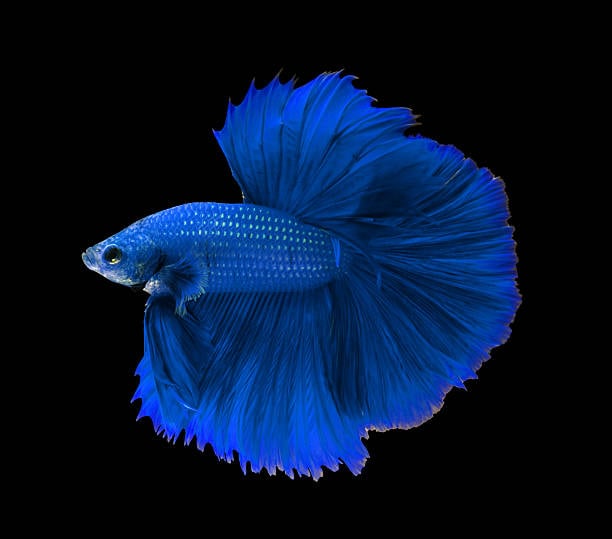
Blue is one of several colors available for Siamese Fighting Fish, generally referred to as Bettas. While different breeds and strains have been intentionally selected for particular color qualities over many years, genetics can also have an impact on the blue color of Bettas. Overall, the blue color of Siamese Fighting Fish is a result of both genetics and unique pigments that combine to produce this eye-catching shade.
Humphead Wrasse
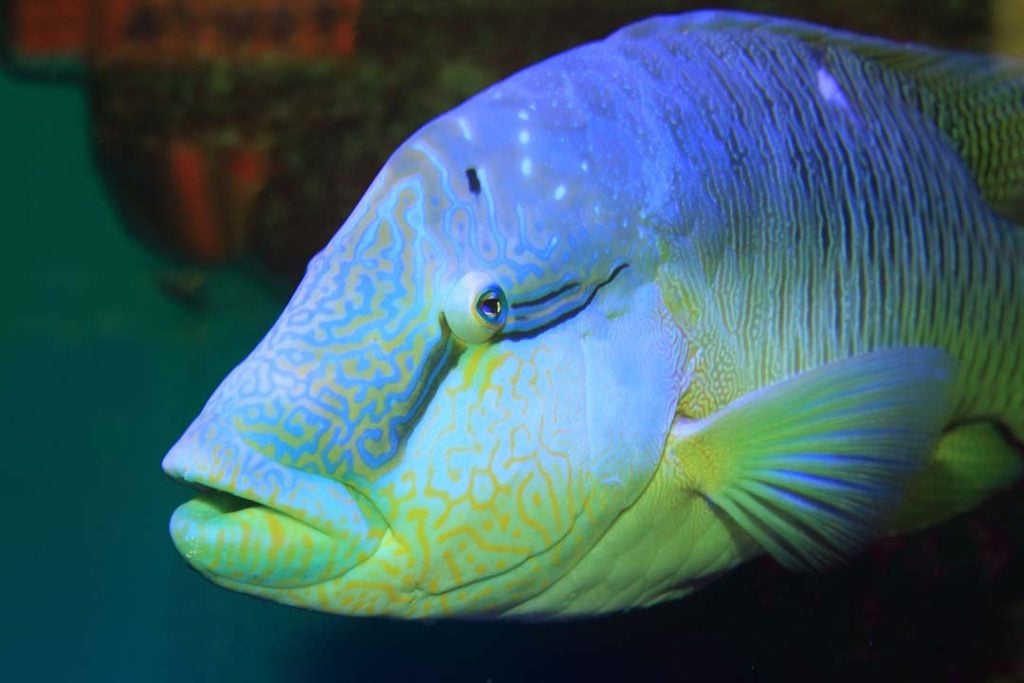
Because of the pigments in its skin, the Humphead Wrasse sometimes called the Napoleon Wrasse is blue. In particular, its structural coloring a pigment is primarily blamed for the blue hue. The Humphead Wrasse’s skin is made up of several layers of guanine crystals, which scatter and reflect light to give it a visible blue hue.
Blue Tang
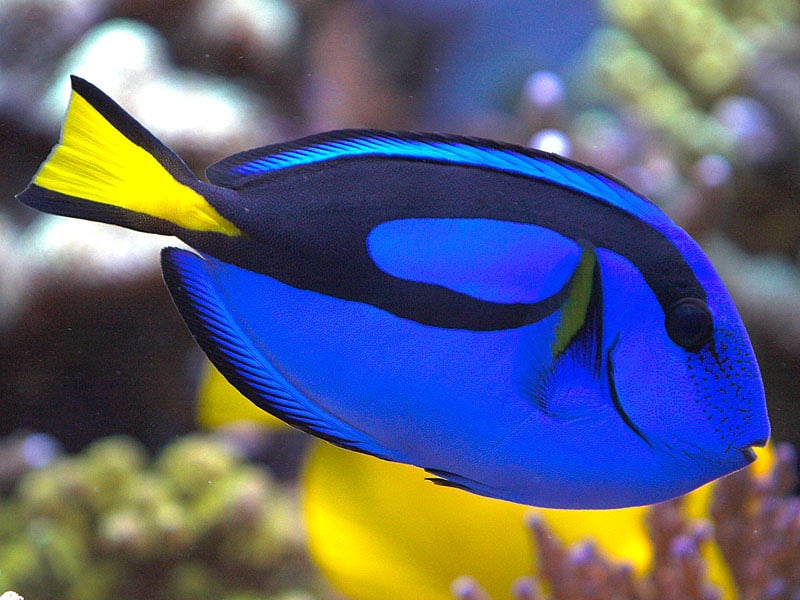
A well-liked marine fish with the scientific name Paracanthurus hepatus, the blue tang is distinguished by its vivid blue color and distinctive form. Coral reefs and shallow seas are where you may find them because it is native to the Indo-Pacific area. Blue tangs consume a variety of algae and tiny invertebrates since they are omnivores.
Eastern Blue Groper
The Eastern Blue Groper, a species of wrasse found in coastal waters of eastern Australia, is blue due to the presence of pigments called carotenoids in its skin. These carotenoids, which are obtained through the groper’s diet of crustaceans and mollusks, give the fish its distinctive blue coloration. Additionally, male Eastern Blue Groupers will also exhibit a vibrant blue hue during mating season to attract females.
Mountain Bluebird
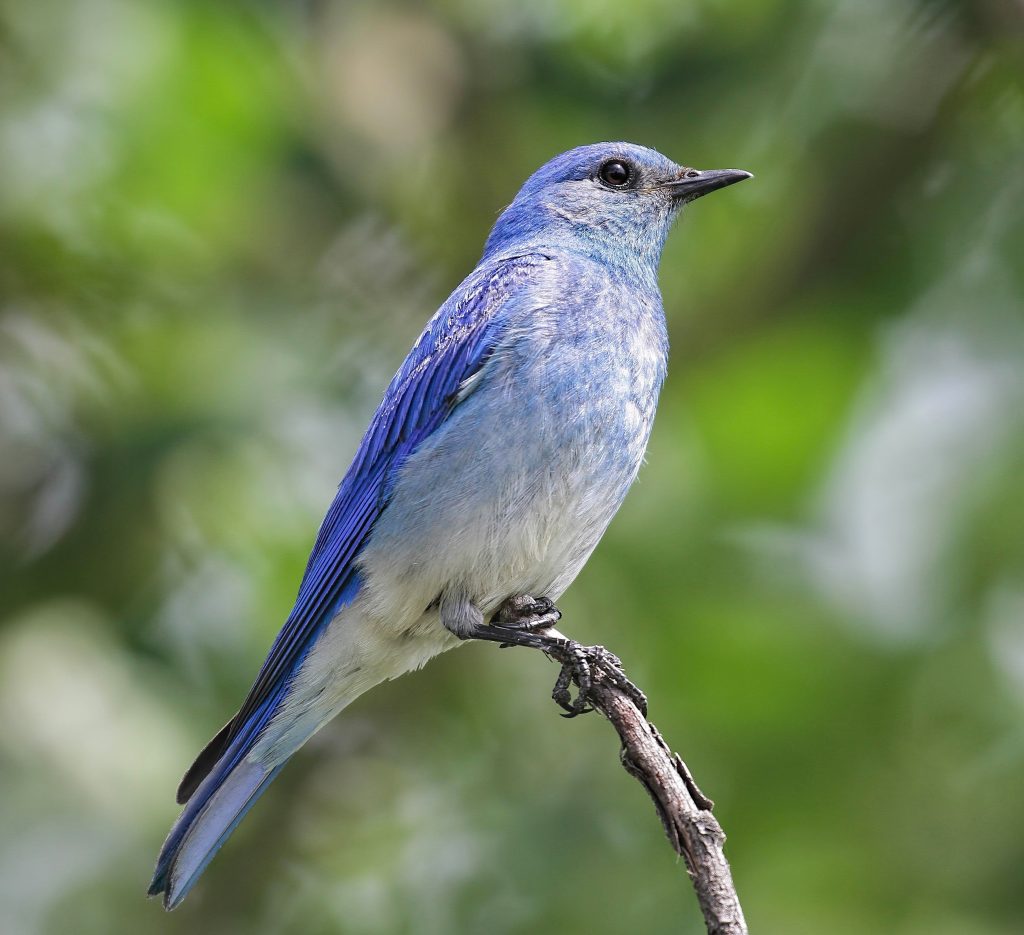
The Mountain Bluebird is blue due to the unique way that its feathers scatter light. The feather structure of the bird contains tiny air pockets that reflect only blue light, absorbing all other colors of light. This gives the bird its distinctive blue color.
Blue Jay
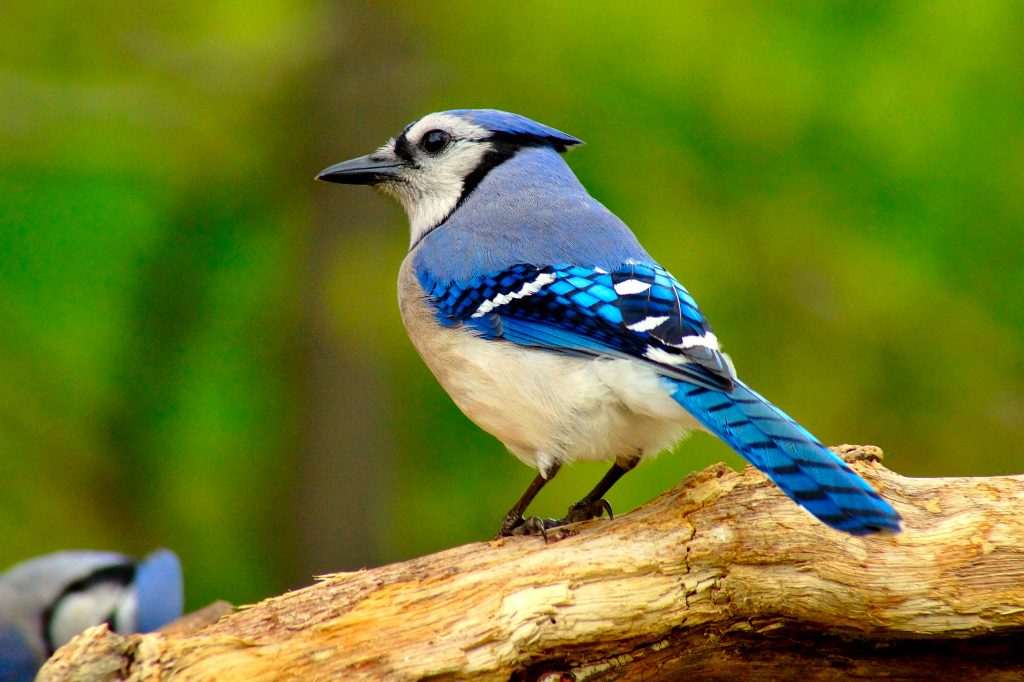
The Blue Jay is an iconic North American bird with a crest on its head, unique blue and white plumage, and booming sounds. They consume a range of things, such as nuts, seeds, insects, and small animals since they are omnivorous. Due to their sociable nature, blue jays are frequently observed in couples or family groups. They are renowned for their intelligence and sophisticated activities, including food storage and the use of particular vocalizations for communication. Via seed dissemination, they contribute significantly to the maintenance of robust forest ecosystems.
Blue Starling
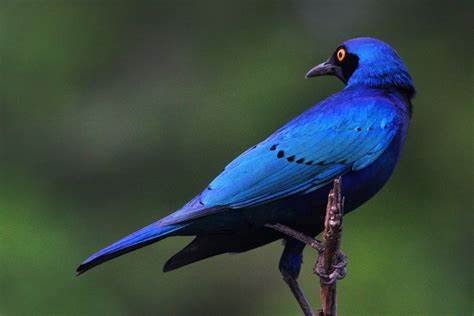
A small bird native to Southeast Asia, the blue starling has stunning blue feathers on its head, wings, and tail. Eats fruits and insects and enjoys being with other birds. Although a favorite pet among bird lovers, the Blue Starling is becoming less common owing to habitat degradation and trapping for the pet trade.
Honeycreeper
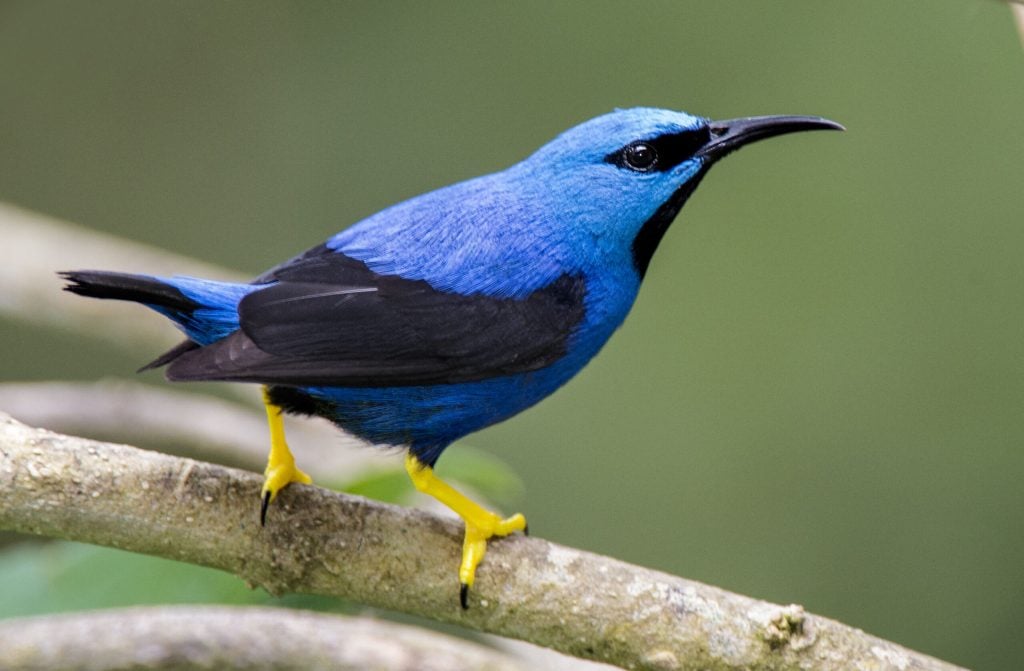
Little, colorful tropical birds called honeycreepers are found in the Americas. Several honeycreeper species feature colorful blue, green, yellow, and orange feathers. According to theory, these hues help birds communicate with one another and attract mates.
Peacock
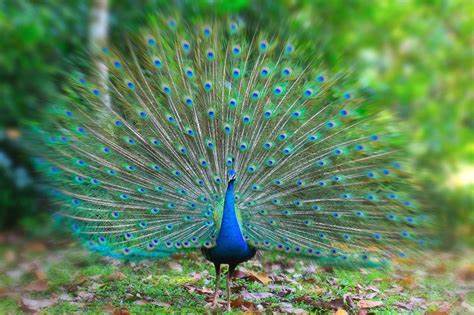
The peacock is renowned for its vibrant feathers, however, the particular shade of blue that can be observed in the bird’s feathers is really the product of structural coloring. The feathers are not actually blue; rather, they have tiny features that scatter light in a way that gives the appearance of a vivid blue color. The small layers of keratin that make up these formations, also called photonic crystals, are perfectly spaced apart to interact with light waves. The light that strikes these structures is dispersed and refracted in a way that gives the peacock’s feathers their distinctive blue-green hue.
Cerulean Warbler
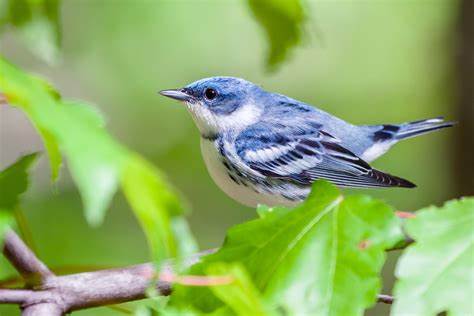
A little bird with a stunning blue-green back and wings, the Cerulean Warbler is a native of North America. The bird’s name comes from the fact that its hue is frequently called cerulean. Its hues stand out even more since the bird’s breast and neck are stark white. A talented and agile flier despite its small size, the Cerulean Warbler is frequently seen flying across the forest canopy in search of insects to eat.
Indigo Bunting
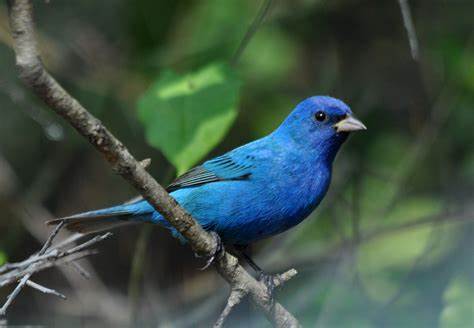
Little songbirds known as “indigo buntings” are frequently seen throughout North America. Males of this species have remarkable blue plumage. More muted colors can be seen in the female. A miracle of nature, it has an intense, rich indigo-blue color.
Blue Grosbeak
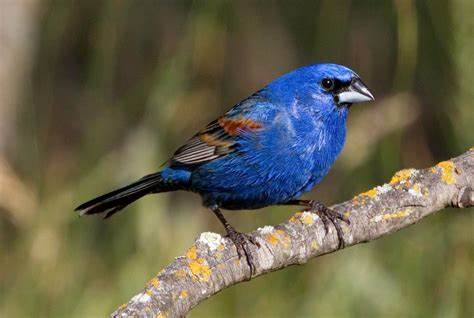
The Blue Grosbeak is a little bird with beautiful blue feathers, which give it its color. The color blue is regarded to be significant for luring mates, facilitating communication, and maybe for camouflaging or warding off predators. It is proof of how lovely nature is.
Dragonfly
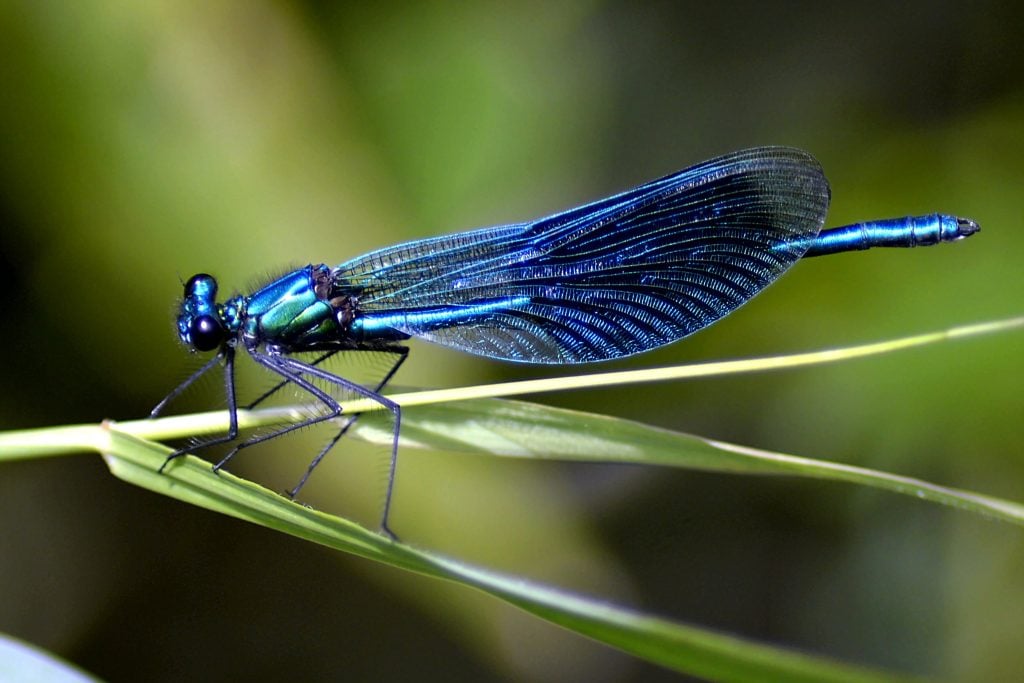
The blue dragonfly is an exquisite member of the Odonata group, distinguished by its long wings, slim body, and swift flying. Its stunning blue coloring is a result of light wave interference, pigments in its wings and thorax, and other factors. The blue dragonfly is a worldwide phenomenon that has inspired both scientific research and creative creation. The blue dragonfly exhibits the astounding beauty and diversity of the natural world overall.
Blueberry
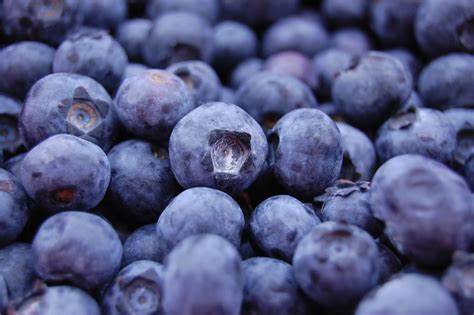
The outer skin of the little, spherical fruit known as the blueberry is a deep, rich blue color. The fruit’s luscious, juicy flesh is a pale shade of green. High concentrations of anti-inflammatory and antioxidant substances that are good for your health are indicated by this hue. A tasty and adaptable fruit, blueberries are used in many different recipes. They are a well-liked fruit all over the world because of their distinctive color and nutritional advantages.
Blue Corn

Food aficionados and health professionals alike have become fascinated by the intriguing and adaptable blue corn. It is a useful addition to any diet because of its unique color, flavor, and nutritional profile since it offers both gustatory pleasure and possible health advantages.
Indigo Milk Cap
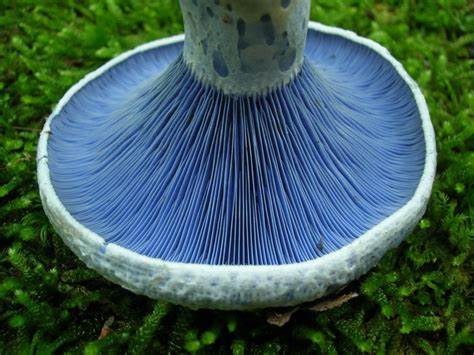
Throughout North America and Europe, deciduous and coniferous woods are home to a kind of fungus called Lactarius indigo, sometimes referred to as the Indigo Milk Cap. With a distinctive blue-violet color that ranges from pale blue to deep purple, it is easily identified. The stem and gills are both the same shade of blue as the smooth, convex cap on the mushroom. It gets its popular name from the liquid it releases when injured, which is a blue milk-like substance. Even though certain milk cap species are edible, it is crucial to correctly identify and prep this fungus before eating.
Butterfly Pea Flower Tea
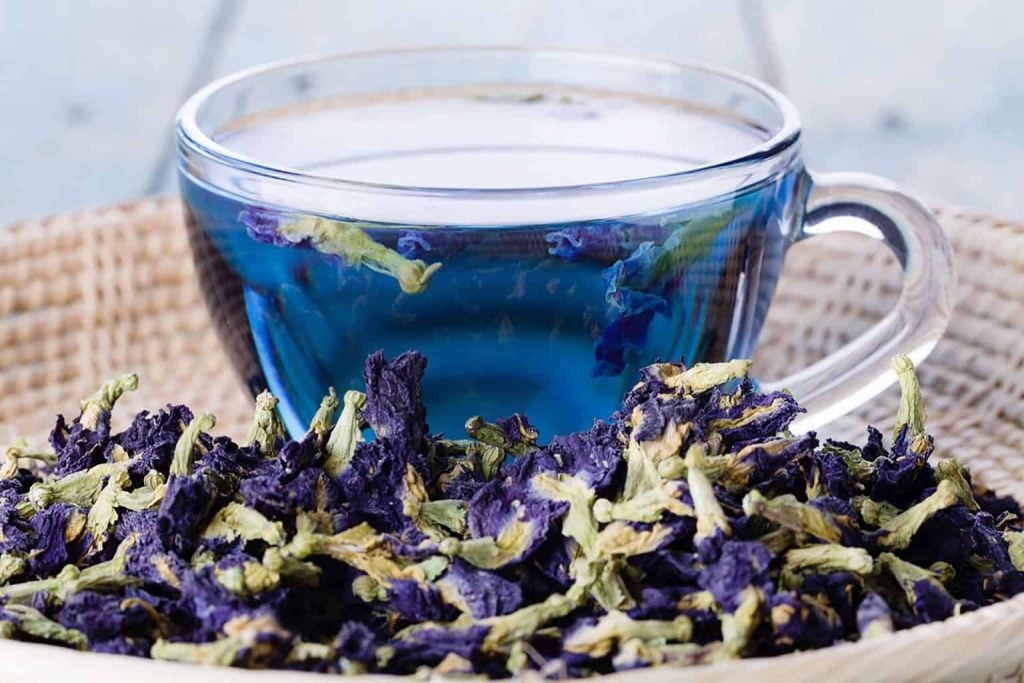
Butterfly Pea Flower Tea is blue due to the presence of a group of natural pigments called anthocyanins. These pigments are responsible for the blue color of the petals of the Butterfly Pea flower, and they are extracted when the flowers are steeped in hot water to make tea. The pH level of the water can also affect the color of the tea, with acidic solutions turning purple and alkaline solutions turning blue or green.
Van Gogh’s The Starry Night
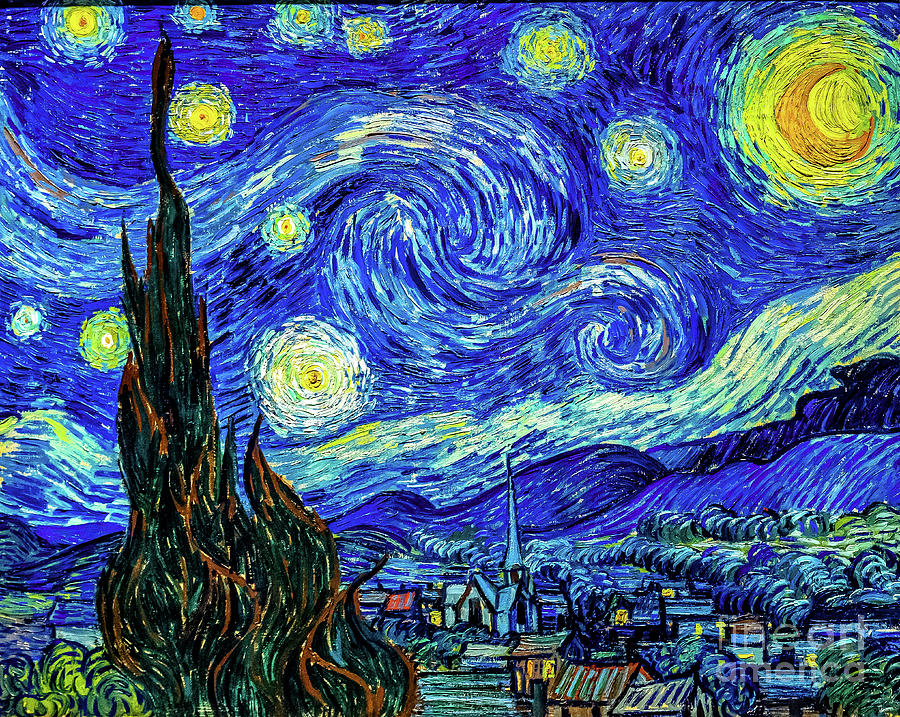
Vincent van Gogh’s renowned work, “The Starry Night,” exhibits a prominent use of blue hues in its depiction of a swirling, dynamic sky. The artist’s choice of color is intended to convey a heightened sense of emotion and tranquility and to evoke a contemplative response from the viewer. Notably recognized for his use of vibrant, expressive colors, van Gogh employed blue tones in “The Starry Night” to achieve a striking visual impact and communicate his artistic vision effectively.
The Blue Mosque
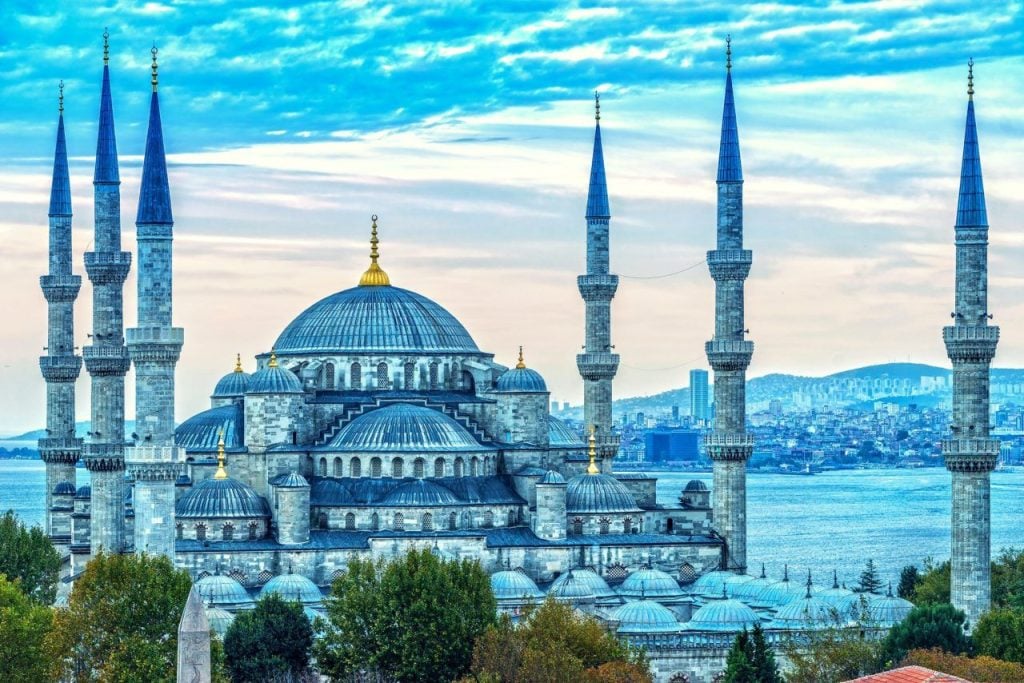
Named after the eye-catching blue tiles that cover its inner walls, the Blue Mosque is located in Istanbul, Turkey. The blue tiles were chosen to create a calm and serene ambiance within the mosque when it was constructed in the early 17th century under Sultan Ahmet I. The tiles’ blue hue was produced by employing cobalt oxide, and they were created in the adjacent town of Iznik, which at the time was well-known for its pottery. The Blue Mosque is still one of Istanbul’s most recognizable buildings today, and tourists from all over the world are drawn to its captivating blue interior.
In many facets of our existence, the color blue may be found. It is an intriguing shade. There is an abundance of blue things to like and enjoy, from the vastness of the sky to the bottom of the ocean, from the delicate beauty of a blue dragonfly to the eye-catching blue of a peacock’s feathers. There is no doubting the significance of the color blue in our environment, whether you are drawn to its calming and soothing qualities or merely appreciate its beauty. Consider its special traits and the part it plays in our lives the next time you come across something blue.
